Rhinoplasty (Nose Job)
Rhinoplasty is a cosmetic and functional surgery aimed at enhancing the appearance and performance of the nose. It encompasses various techniques, including closed rhinoplasty, open rhinoplasty, and non-surgical procedures—that are tailored to the patient’s unique facial structure and aesthetic goals. Additionally, specific aspects such as nose tip aesthetics are frequently refined to achieve a more balanced and harmonious facial profile.
Choose Your Topic
Get in Touch
Get professional treatments in Turkey at Lygos Clinic, offering effective, affordable treatments for a healthier and more aesthetically pleasing life.
You can contact us via WhatsApp and Instagram for a quick response.
Watch the journey of our patient undergoing rhinoplasty at Lygos Clinic! 🏥✨ Curious about the transformation before and after the nose surgery? In this video, we share the surgical process, recovery period, and final results.
When you examine the results before and after rhinoplasty, there are significant differences. Aesthetic and functional problems that existed before the operation are eliminated. Afterwards, a more aesthetic nose shape is obtained and breathing is improved. This process ensures that you are satisfied with both your appearance and self-confidence.
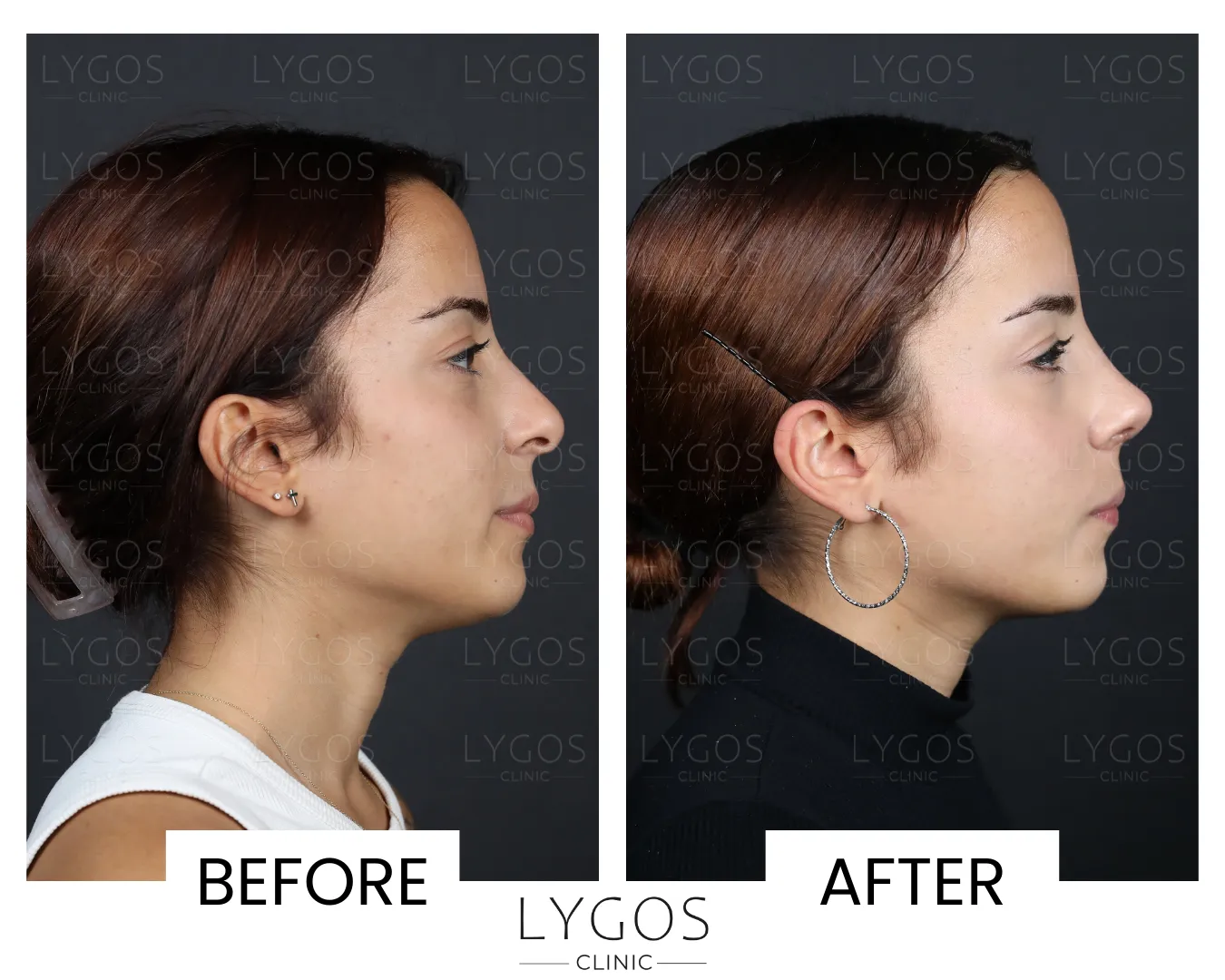
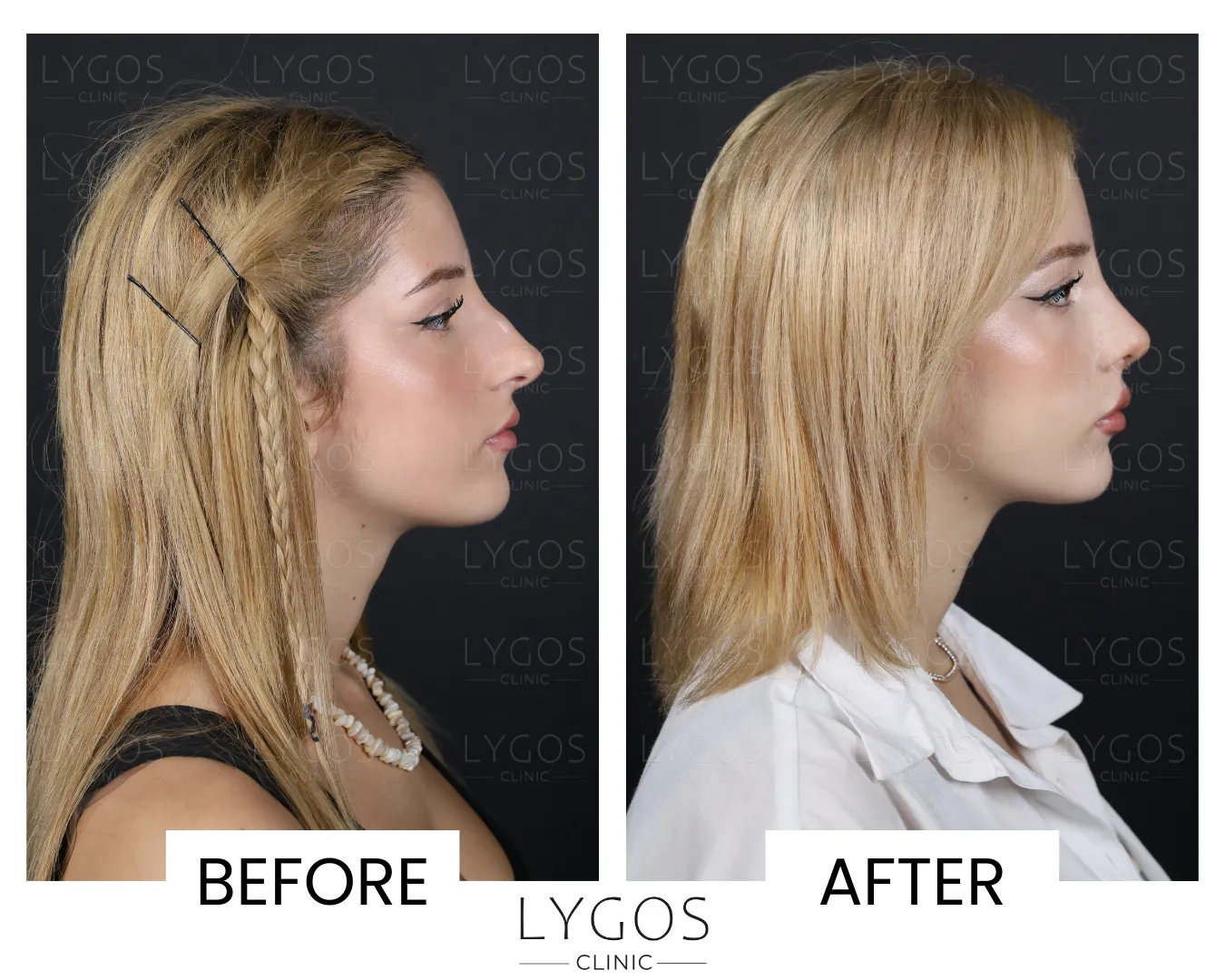
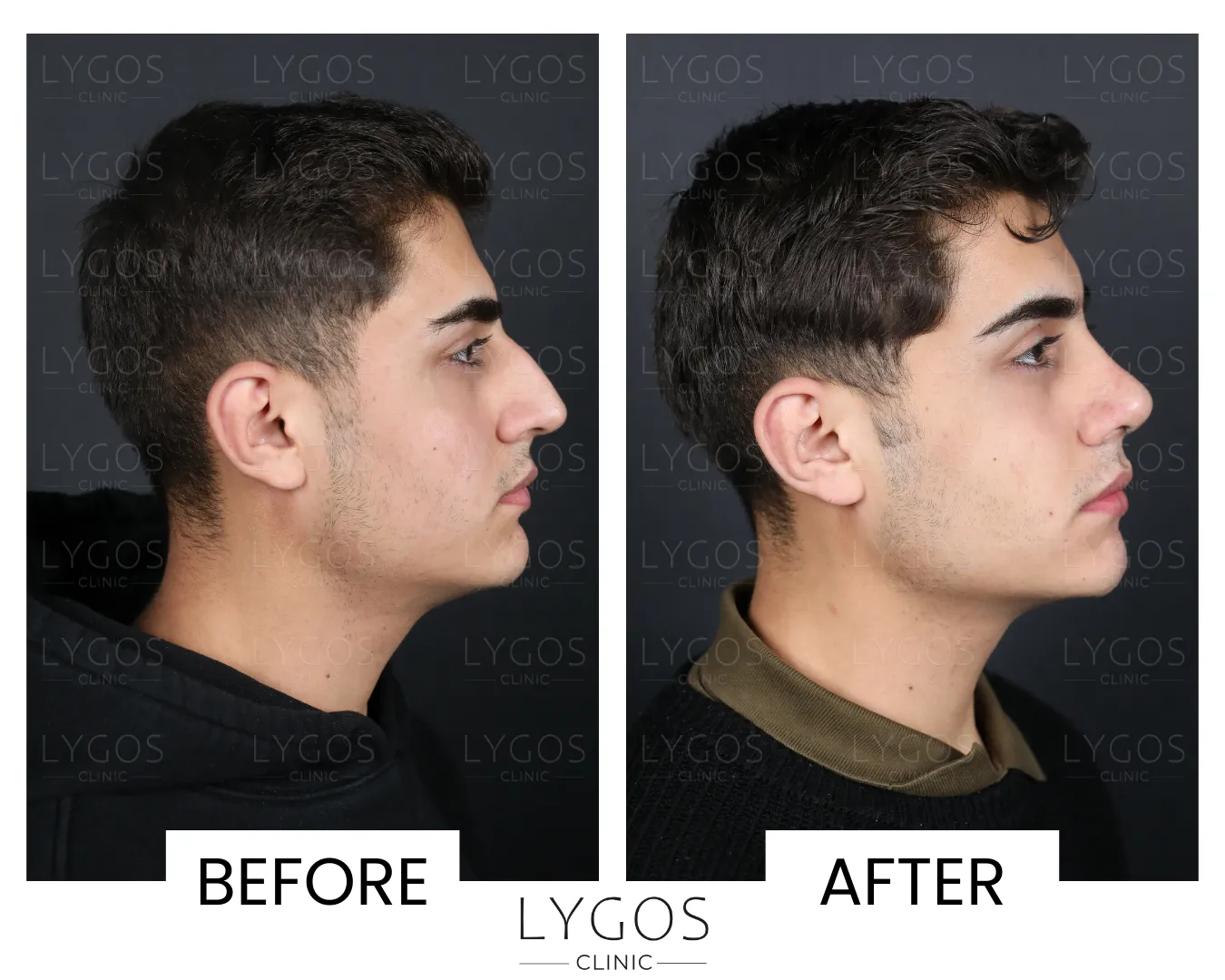
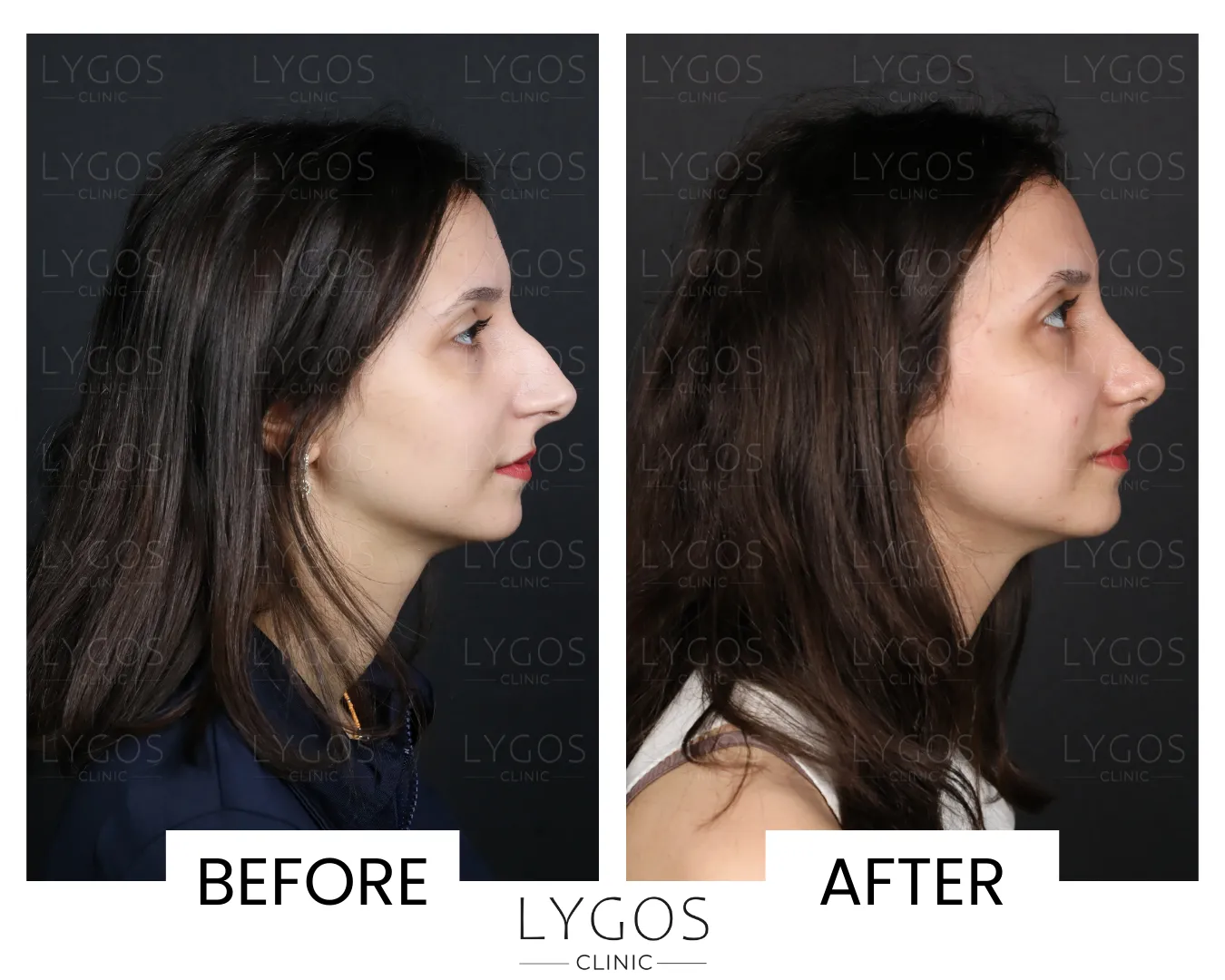
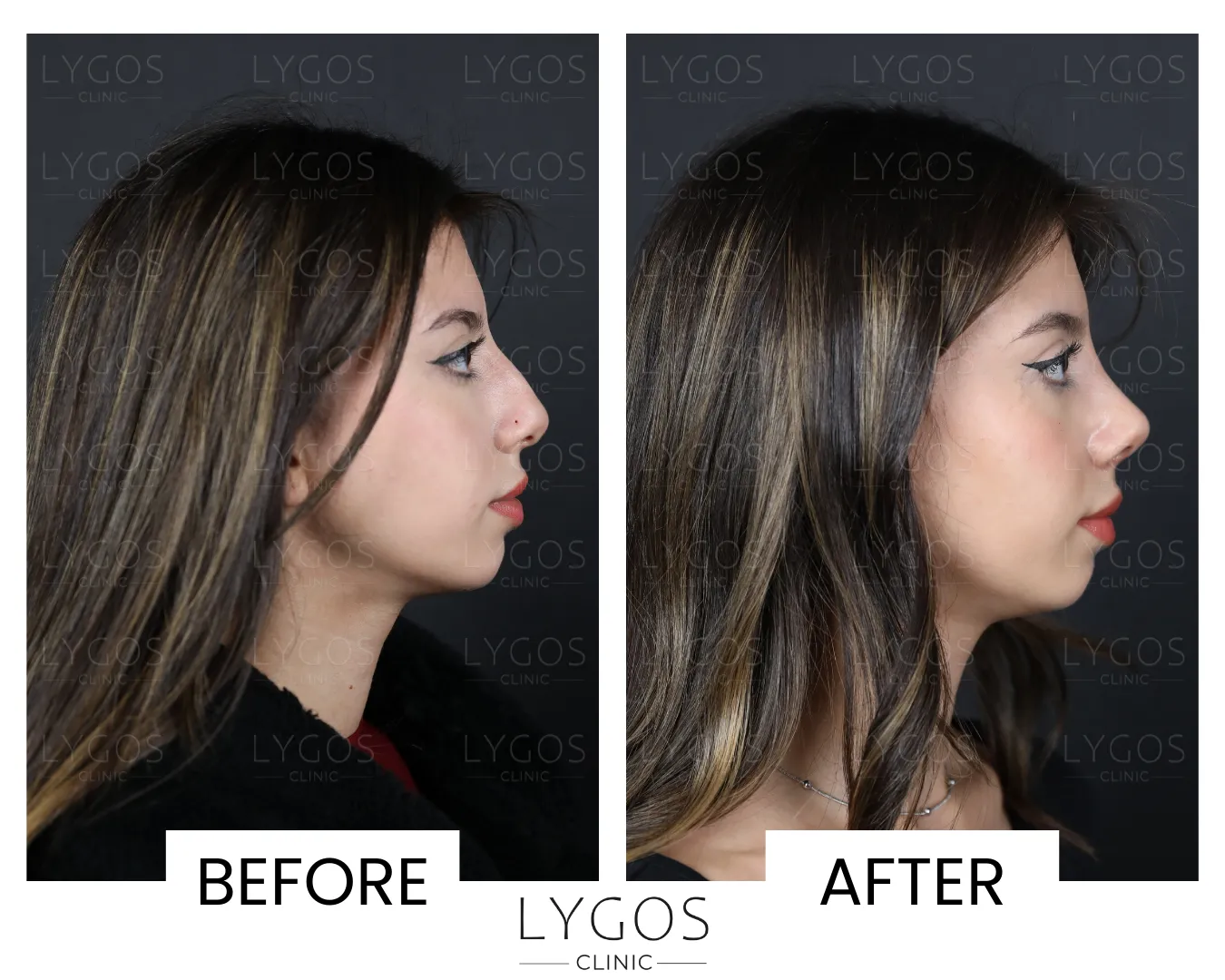
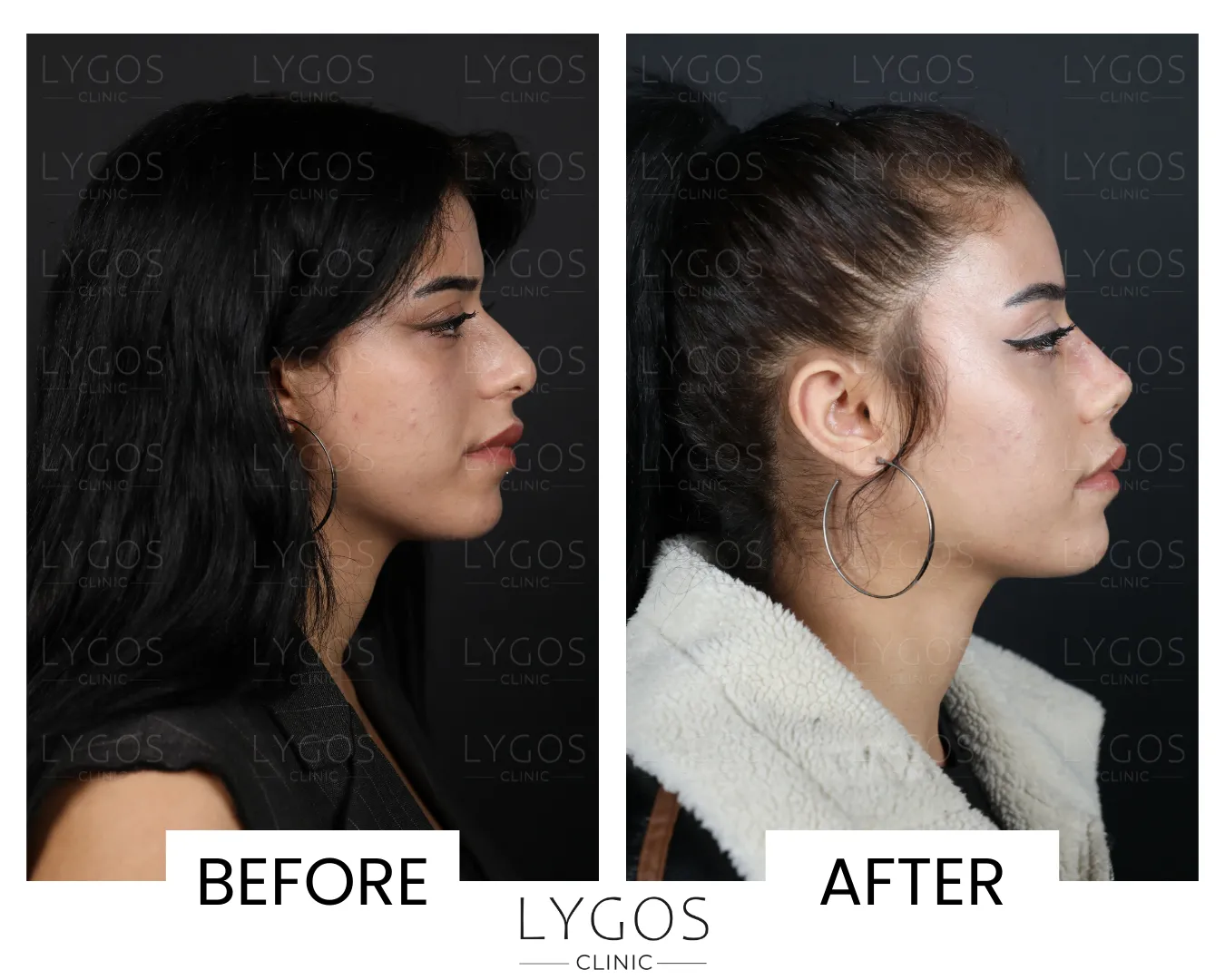
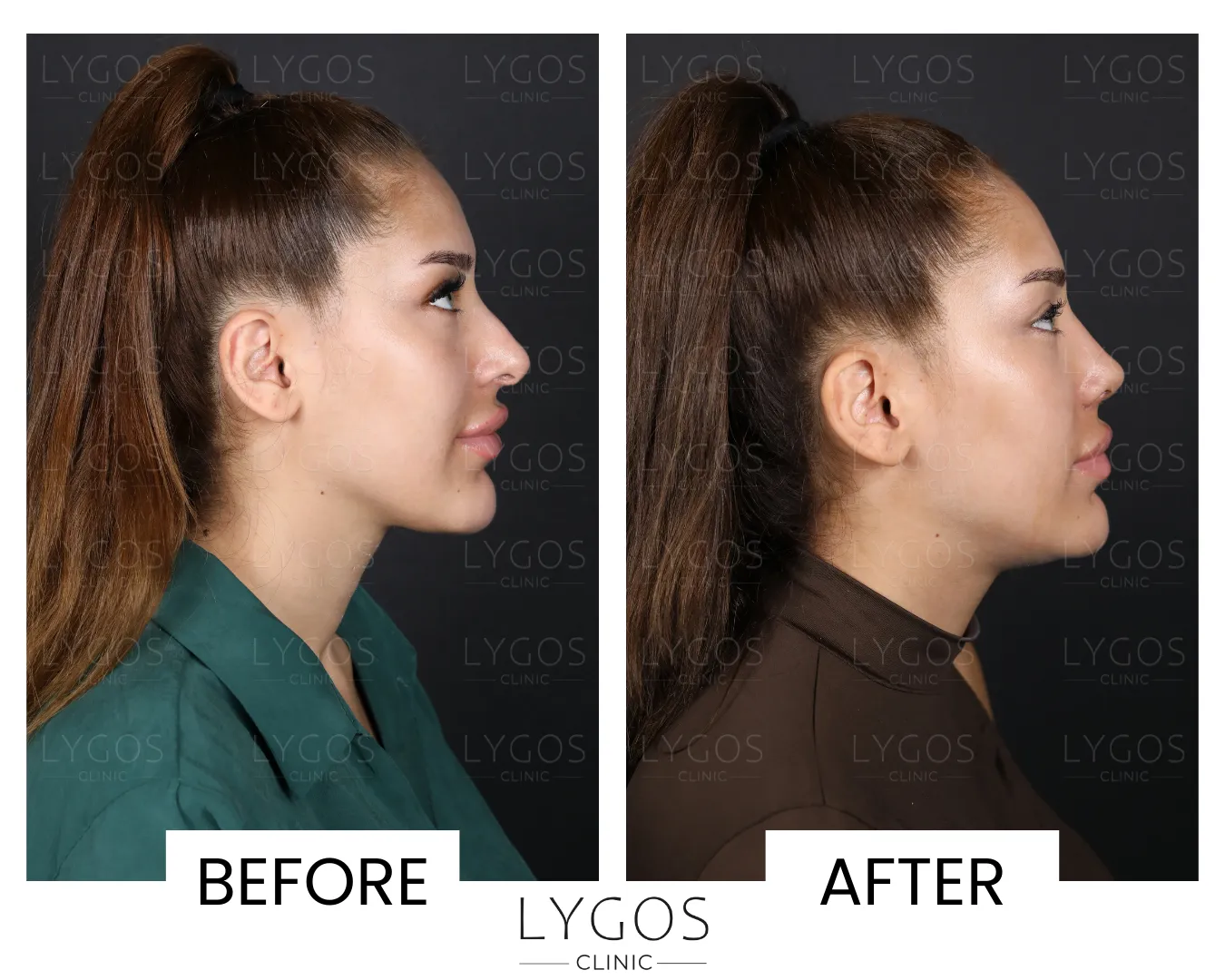
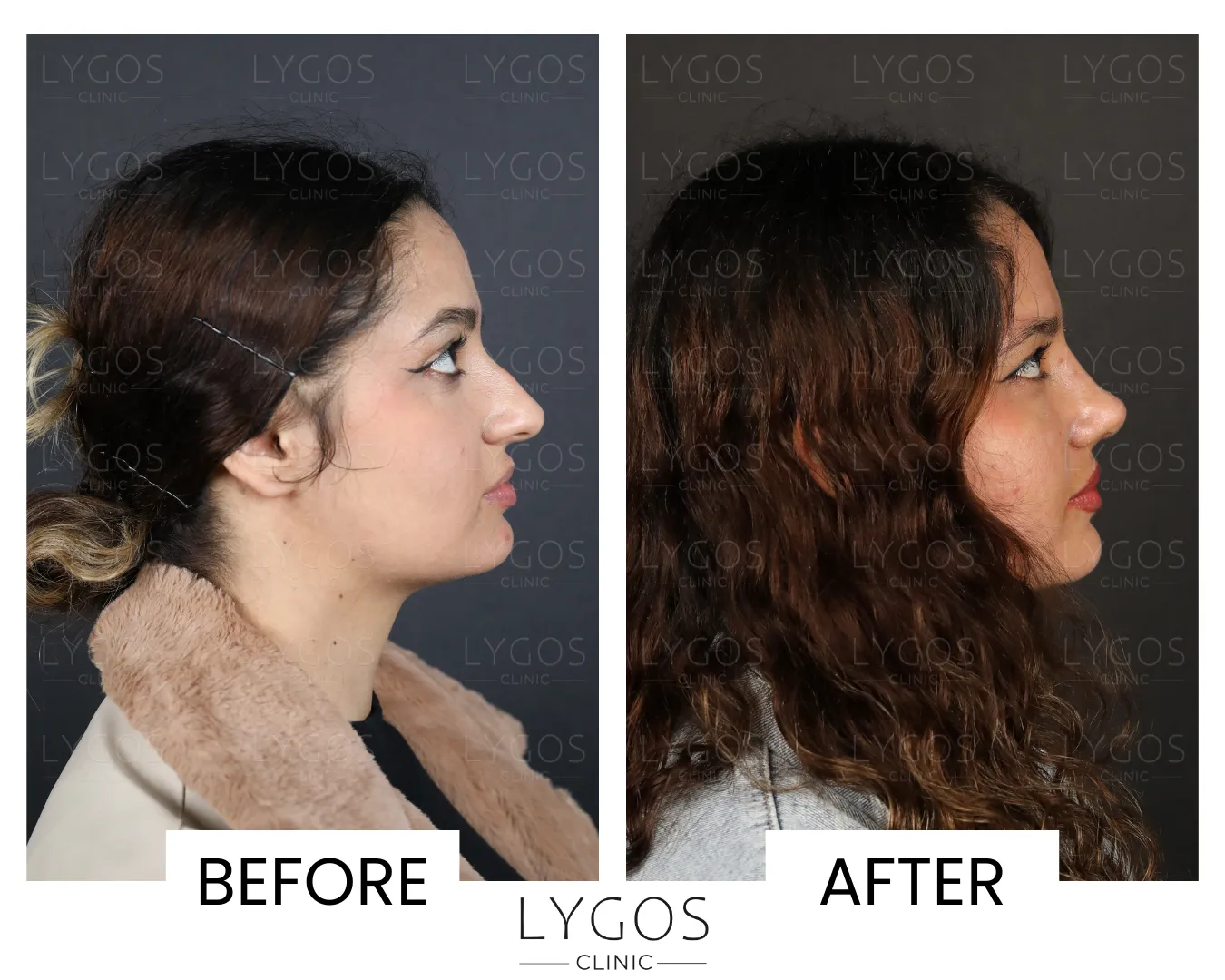
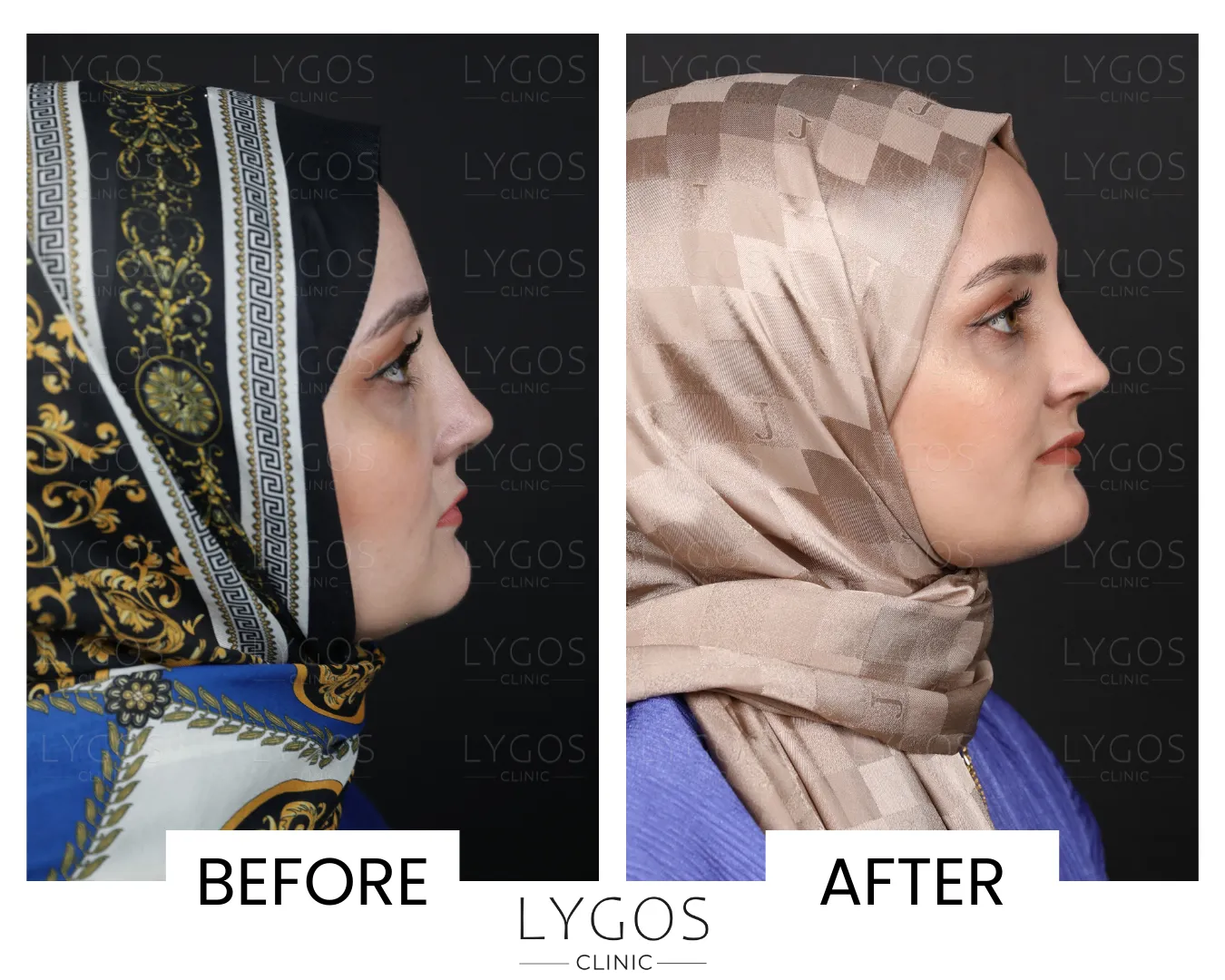
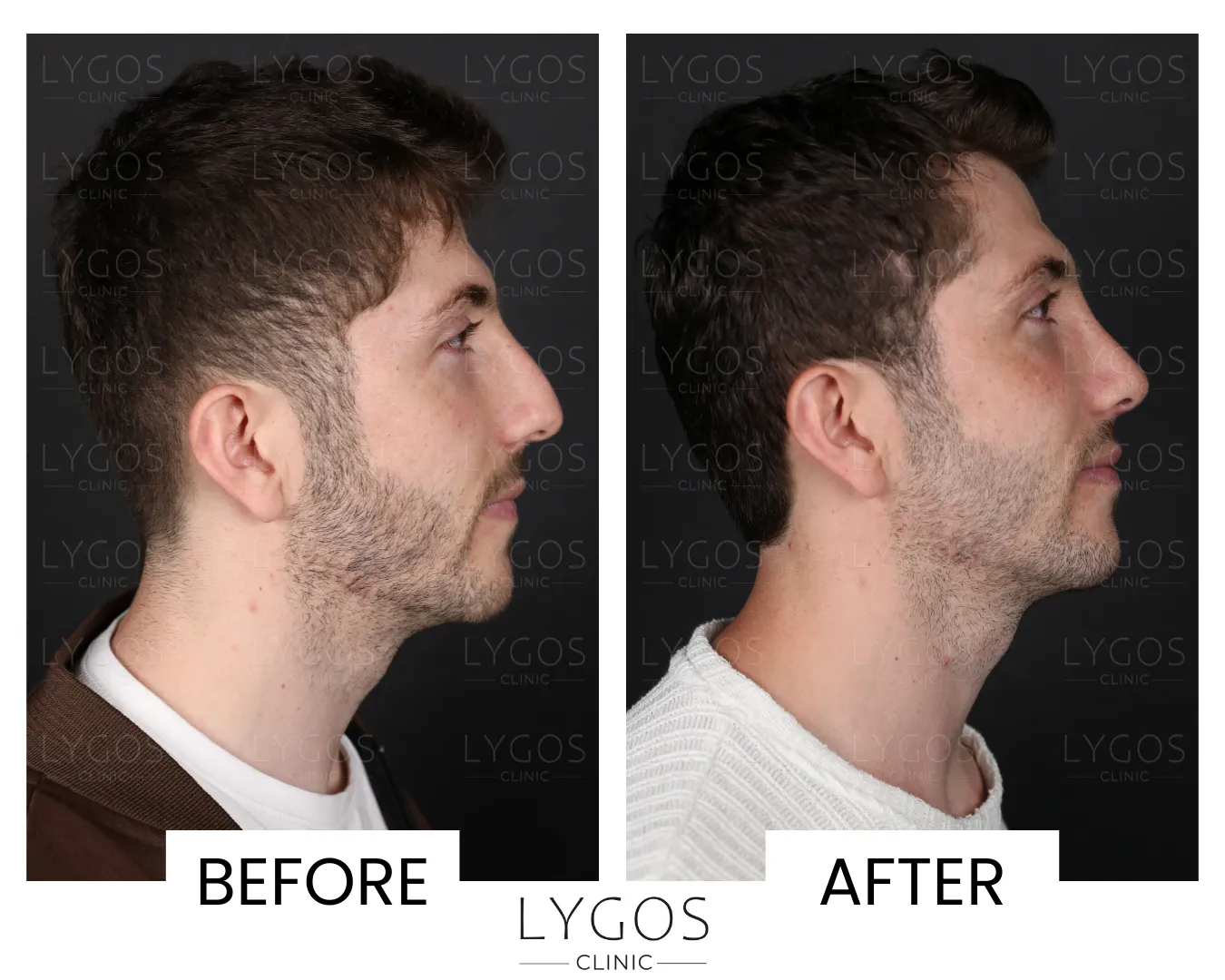
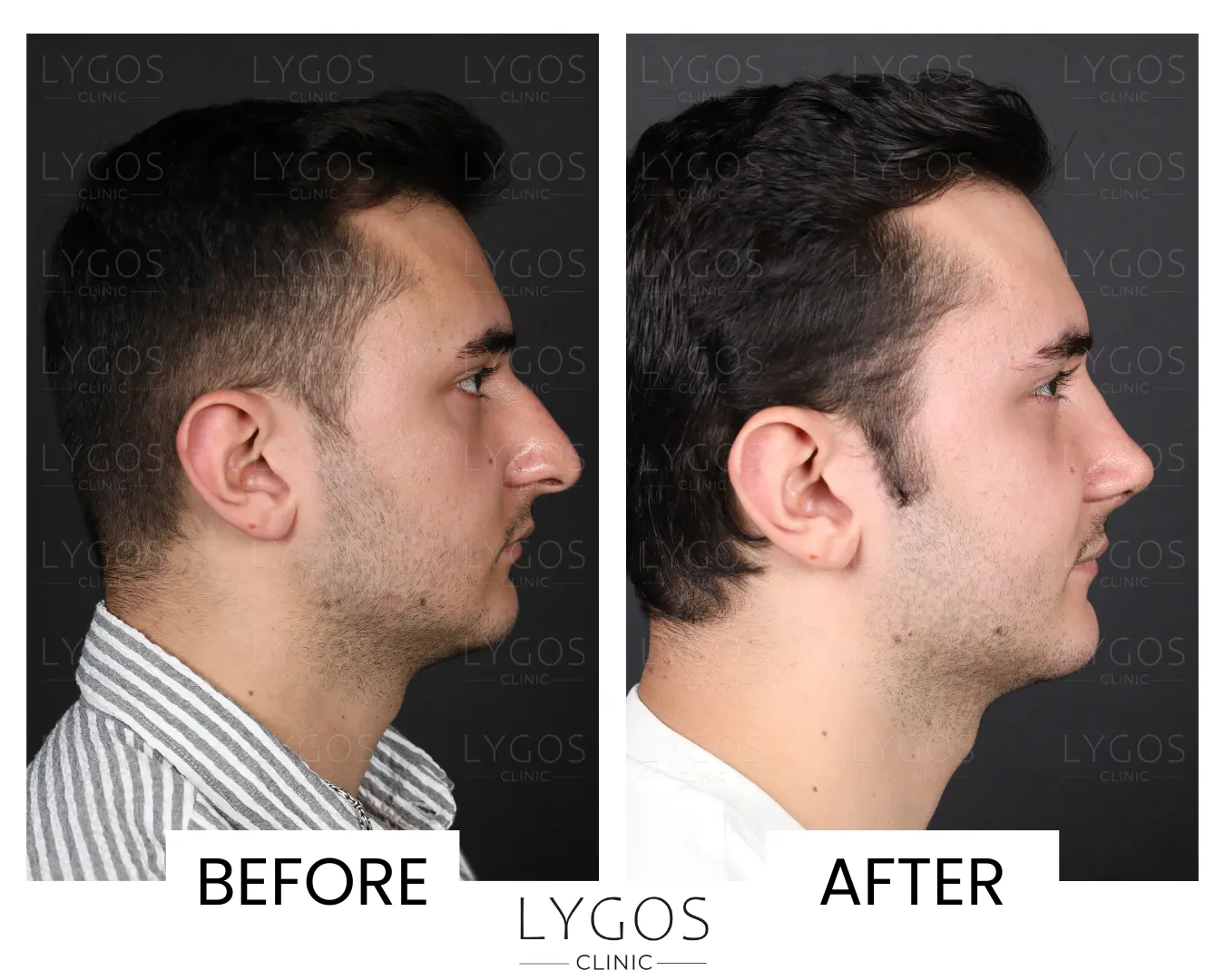
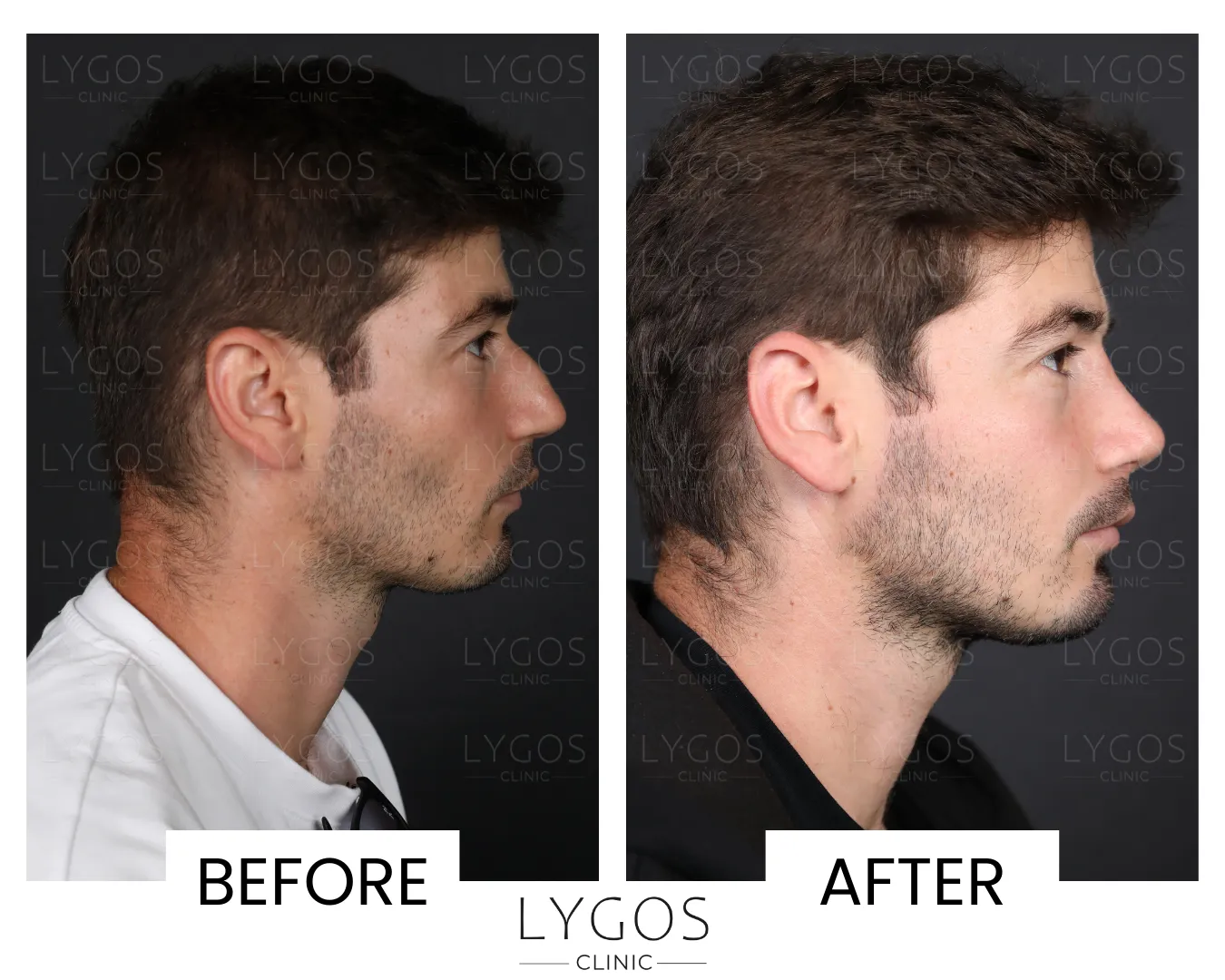
- Accommodation in a 5 Star Hotel for the duration of the operation
- VIP Transfer Service During the Transaction
- Opportunity to Benefit from Personalized Health Services
- Privileged Service by Our Expert Doctor Team
- 12 Months of One-on-One Counseling and Assistance
For more detailed information, please contact us via the platforms below. We will respond to your requests as soon as possible.
|
What is included in the package |
|
|---|---|
|
5 Star Hotel Room |
|
|
Experienced Team of Doctors |
|
|
Personalized Health Care |
|
|
VIP Transfer Service |
|
|
1 Year of One-on-One Counseling |
|
|
Post-Operative Care |
|
|
Routine Checks Before Operation |
|
|
Universal Health Care |
|
Get in Touch
Get professional treatments in Turkey at Lygos Clinic, offering effective, affordable treatments for a healthier and more aesthetically pleasing life.
You can contact us via WhatsApp and Instagram for a quick response.

What is Rhinoplasty (Nose Job) ?
Like any major surgery, nose job (rhinoplasty) surgery carries various risks. Risks specific to nose job include nasal obstruction, difficulty breathing through nose, asymmetric nasal appearance, persistent numbness, pain, changes in color, persistent swelling, scarring, septal perforation, and the need for additional surgical interventions.
Patients considering rhinoplasty should be fully informed about these risks. This information is provided by a rhinoplasty surgeon during the pre-operative consultation. At this stage, the patient's medical history, motivation for the surgery, and goals are thoroughly discussed. Honesty is paramount at this stage, as open communication about desires and goals can help achieve the best outcomes.
The surgeon provides clear information about what rhinoplasty can and cannot achieve for the patient. Additionally, information about nasal obstruction, prior surgeries, and medications is gathered. Medical conditions, such as bleeding disorders, are evaluated as they can impact the suitability for rhinoplasty.
During this process, the surgeon conducts a comprehensive physical examination, thoroughly inspecting the patient's facial features and nasal structure. This examination is essential to determine which changes need to be made and how physical characteristics, such as skin thickness or cartilage resilience in the nasal tip, can affect the outcomes. The physical examination is also crucial for assessing the impact of rhinoplasty on breathing.
Postoperatively, the surgeon may use nasal photographs to monitor the results and for long-term evaluations. These photographs are essential for visual comparisons between pre- and post-surgery and for analyzing the visual outcomes.
If the patient has a small chin, the surgeon may discuss options for chin augmentation to better balance the facial profile. A small chin can create an unbalanced appearance, and addressing this through chin surgery can enhance overall harmony.
It's generally possible for patients to be discharged from the hospital on the same day as the rhinoplasty. In the postoperative period, effects from anesthesia may include symptoms like memory loss, slower reaction times, and decision-making difficulties. Therefore, having a friend or family member present to assist with postoperative care can be beneficial.
Before rhinoplasty, it's necessary to avoid medications that can increase the risk of bleeding for approximately two weeks before the surgery. Only medications approved or prescribed by the doctor should be used. Herbal remedies, natural medications, and supplements should also be avoided. Smoking should be discontinued or temporarily ceased because it can slow down the postoperative healing process and increase the risk of infection.
Which Nose Types Can Have Rhinoplasty Surgery?
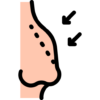
Arched Noses
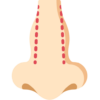
Low Noses
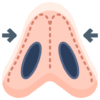
Noses with deformed tips
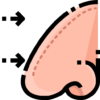
Curve or sunken noses
To Who and in Which Cases of Rhinoplasty Performed?
Rhinoplasty is an operation performed to eliminate factors that negatively affect the person in terms of both aesthetics and health, such as nasal curvature (deviation), nasal flesh growth (turbinate hypertrophy), nasal asymmetry, nasal deformations, nasal arch shaving, nasal reduction, and enlargement. Rhinoplasty surgery is possible for every patient whose health condition does not prevent surgery.
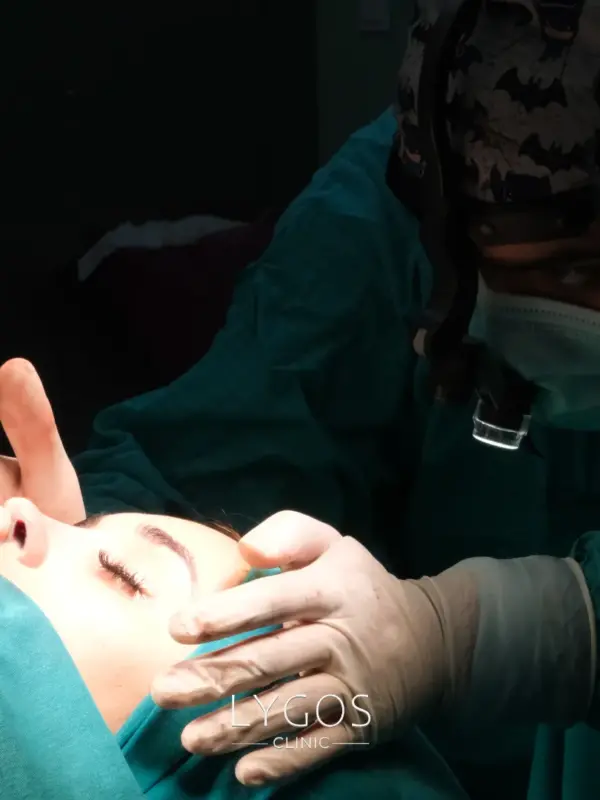
How is Rhinoplasty (Nose Job) Performed?
Rhinoplasty is a surgical procedure performed to improve nasal aesthetics. Rhinoplasty surgery, which is performed under general anaesthesia under standard sterile conditions, takes an average of 1 to 4 hours. This procedure can be performed with two different techniques: Open and closed technique.
In the closed technique, all incisions are made inside the nose and the surgeon completes the surgery from the inside. This method resembles a procedure such as removing objects from inside. If you are only planning to make some corrections in the nose, this technique is quite suitable for you. However, if you need more complex corrections, the closed technique may limit you.
On the other hand, in the open technique, a 3-4 mm incision is made at the tip of the nose, allowing the surgeon to directly see the structures in the anterior 2/3 of the nose. This method provides more visibility, access and convenience the surgeon.
The choice of technique often depends on the surgeon's expertise and the patient's specific needs. The closed technique resembles working within a closed container, as mentioned earlier. If your intention is merely to remove or adjust items within, this method works well. However, for more intricate modifications, the open technique offers advantages.
The debate over which technique is superior has been an ongoing discussion among surgeons, and no definitive conclusion has been reached.
The open technique provides the surgeon with a direct view of the structures in the front two-thirds of the nose, allowing for more detailed adjustments. This enables finer tuning during the surgery, potentially leading to better outcomes.
The possibility of revision after open technique surgery is reduced. This may result in higher patient satisfaction with their post-surgery results. However, it's important to remember that every patient is unique, and surgeons should conduct individual assessments to determine the most suitable technique and approach.
The primary concern with the open technique is the possibility of leaving a scar at the tip of the nose. However, when the surgery is well-executed, this scar becomes nearly imperceptible and remains concealed beneath the nose. Many patients tend to forget about it post-surgery.
Therefore, it's crucial to have a thorough discussion with your surgeon before the procedure. Trusting your surgeon's expertise and experience is of utmost importance. Every surgeon aims to achieve the best results using the methods they are most confident in. Determining the most suitable approach for each patient depends on their individual needs and circumstances. Consequently, pre-operative assessments and following the surgeon's guidance are essential.
What is Age Limit for Rhinoplasty (Nose Job) Operation?
In Rhinoplasty surgeries, the age limit is +17 for women and +18 for men due to the faster completion of anatomical development.
What are Rhinoplasty (Nose Job) Methods?
With the effect of developing technological innovations in Rhinoplasty operations;
- Open Rhinoplasty (Nose Job)
- Closed Rhinoplasty (Nose Job)
Two different surgical techniques are applied for Rhinoplasty surgery. You can prefer the best option with your doctor. In Rhinoplasty surgery, generally two different surgical techniques are commonly used to access the bone and cartilage structures beneath the skin of the nose, and these techniques are referred to as open and closed techniques.
"The "closed technique" or "closed rhinoplasty" is explained by the fact that all incisions made within the nose are kept entirely inside the nose and are not visible from the outside. In this method, the nasal skin is not completely lifted; only the connection between the nasal skin and the underlying structures is disrupted, and the surgery is performed through this opening.
The "open technique" or "open rhinoplasty," on the other hand, is known for making an incision in the skin of the column called the columella between the two nostrils in addition to the incisions made inside the nose. This allows the complete lifting of the nasal skin and provides better access to the bone and cartilage structures to be worked on.


What are the Nose Job Techniques?
Nose job techniques can encompass multiple methods. The most well-known techniques are as follows:
- Structural rhinoplasty (open or closed)
- Pushdown rhinoplasty (open or closed)
- Letdown rhinoplasty (open or closed)
- Piezo rhinoplasty (open or closed)
- Preservation Rhinoplasty
Nose Job Techniques
Rhinoplasty initially, it was performed using closed techniques. However, the closed surgeries during that period were quite different from today's more advanced closed rhinoplasty operations. Later on, open nose aesthetics started to become more preferred.
The open technique provided better visibility and easier access to challenging interventions. Nowadays, we are using modern preservation techniques.
Currently, in most cases, there is a possibility of performing nose aesthetics using closed methods. In the past, we used to completely open the nose, perform the procedure, and then close it layer by layer to complete the surgery.
Nowadays, we perform rhinoplasty by entering through the nostrils, creating tunnels without cutting the nose. The closed method is preferred because it causes less trauma to the nose and, therefore, allows for a faster recovery.
The term "creating tunnels" means shaping the nose with minimal incisions, reaching only the necessary amount to access the nasal structure and cartilage structure without making excessive cuts.
Another method that has recently gained popularity is preservation rhinoplasty. In most of my applications, we perform this preservation surgery without intervening in the nasal dorsum.
The characteristic of this approach is its respect for tissue. The more respect is shown to the tissue, the less intervention there is on the tissue, which accelerates the healing process.
Advantages of Closed Rinoplasty Technique
- Generally has a shorter surgical duration, often shorter than open rhinoplasty.
- Offers a faster return to a normal state.
- Results in less postoperative swelling at the nasal tip.
- There is no risk of scarring in the columella skin between the nostrils.
Disadvantages of Closed Rinoplasty Technique
- Requires shaping of bone and cartilage structures in a limited area.
- Shaping the nasal tip cartilages can be a challenging task. Cartilage grafts are frequently used.
- Demands more experience to make desired changes and achieve successful results.
Advantages of Open Rinoplasty Technique
- Allows for easier evaluation of the bone and cartilage structures to be shaped.
- Enables more effective use of both hands and vision.
- Provides easier and more effective control of bleeding.
- Tools like ultrasonic piezo can be used more comfortably.
- Easier to shape and symmetrically modify the cartilage structures that make up the nasal tip.
- More straightforward for secondary (revision) rhinoplasty procedures.
- Facilitates the placement of various tissues in their ideal positions and their fixation with sutures.
- Generally results in more controllable and predictable outcomes.
Disadvantages of Open Rinoplasty Technique
- Longer surgical duration.
- May lead to more swelling at the nasal tip, with a longer recovery period.
- The incision made in the columella skin may leave a scar, and circulation issues in this area can develop.
What is the Difference Between Open Rhinoplasty and Closed Rhinoplasty?
- Open Rhinoplasty is the name given to the operation performed by removing the skin layer with a small incision on the column skin called columella at the point where the nostrils meet.
- Closed Rhinoplasty, on the other hand, is a method applied by making an incision through the nostrils without an incision on the columella column skin. Both Rhinoplasty methods are techniques that can be used to eliminate congenital or traumatic phenomena that negatively affect the person.
Is Rhinoplasty (Nose Job) Surgery Permanent?
Rhinoplasty, also known as nose surgery, has a permanent effect. When there are no extra negativities that can be experienced, there is no deformity and deformation does not occur. As the age progresses, the shape of the nose does not deteriorate. The main factor determining permanence is the success rate of the operation.
The success criterion of rhinoplasty or nose surgery is that the operation is permanent even after 20 years and the patient can use his nose without fear and in a healthy way. One of the most important factors in the success of the operation is that the doctor is an expert in the field and can achieve successful results. In addition, choosing and using the right hospital and quality equipment for the operation will increase the success criteria. Apart from all these situations, there are also rules that the patient must follow.
So, What Should The Patient Do After Rhinoplasty Surgery?
- The first thing the patient should do after rhinoplasty surgery is to use the medications recommended by the doctor regularly.
- After the operation, you should follow the advice given by your doctor.
- You should protect your nose against impacts and take a break from activities that are likely to receive impacts.
- After rhinoplasty surgery, you should avoid heavy sports.
- You should pay attention to hygiene rules and keep the areas treated in the operation away from germs. In this way, you can ensure that your nose does not get infected.
How Many Hours Does Nose Aesthetics Take?
Rhinoplasty directly affects the facial balance of a person. Since each individual has a unique facial structure, there is a possibility that the procedure may take a short or long time. Therefore, rhinoplasty surgery; It varies according to the size of the procedure, the techniques to be applied and the special condition of the patient.
In average-sized procedures, rhinoplasty operations performed with open technique usually take between 2.5-3 hours. Rhinoplasty operations performed with closed technique may take approximately 3-3.5 hours. Some patients may need to have cartilage removed from their ribs. Due to this revision, the operation time may be longer in nose and ear operations. As a result, the duration of rhinoplasty varies depending on personal needs and the techniques applied.
Before the operation, it is a very critical detail to have a detailed conversation with your doctor and share your expectations and questions about the process. You should also remember to follow your doctor's recommendations for a good surgical result.
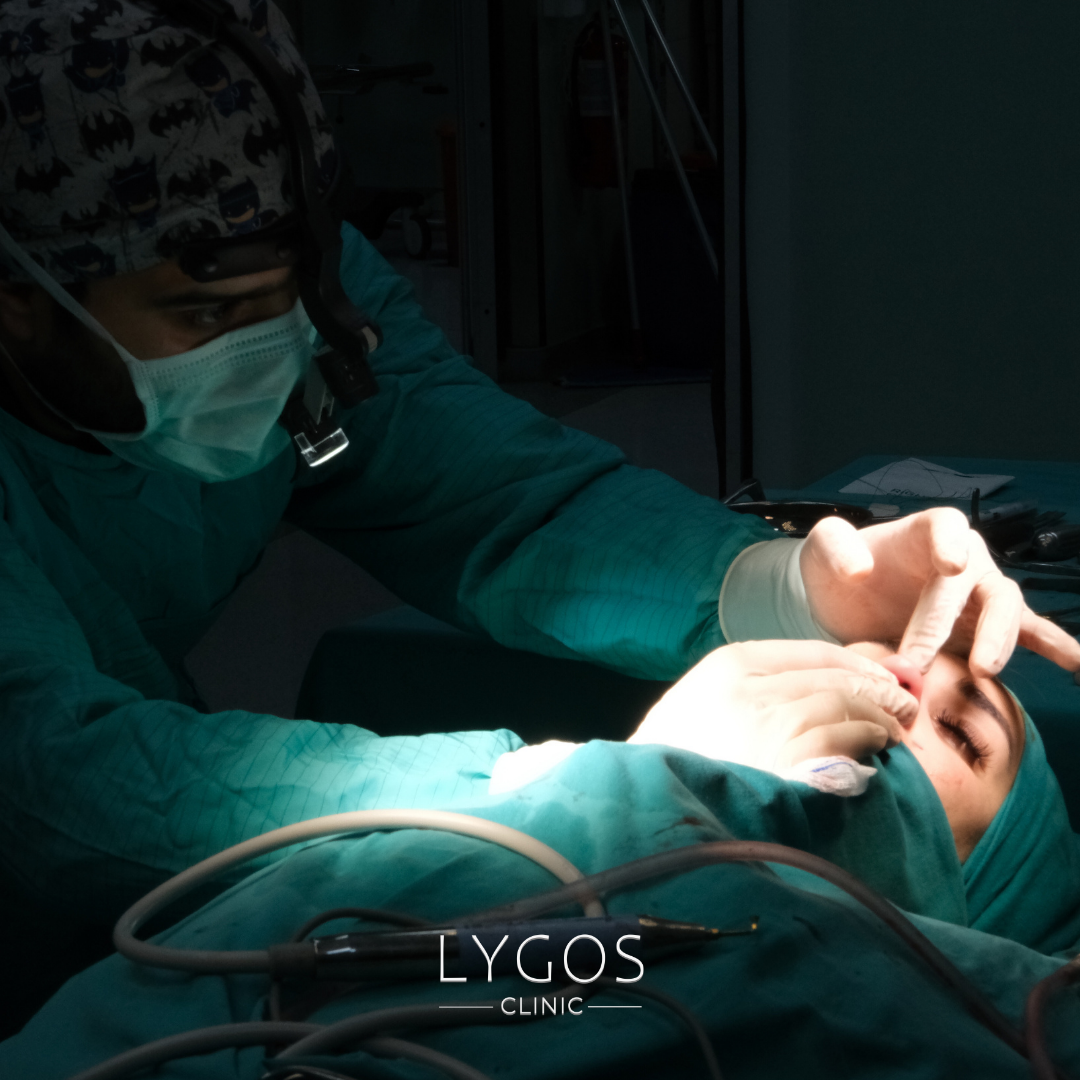
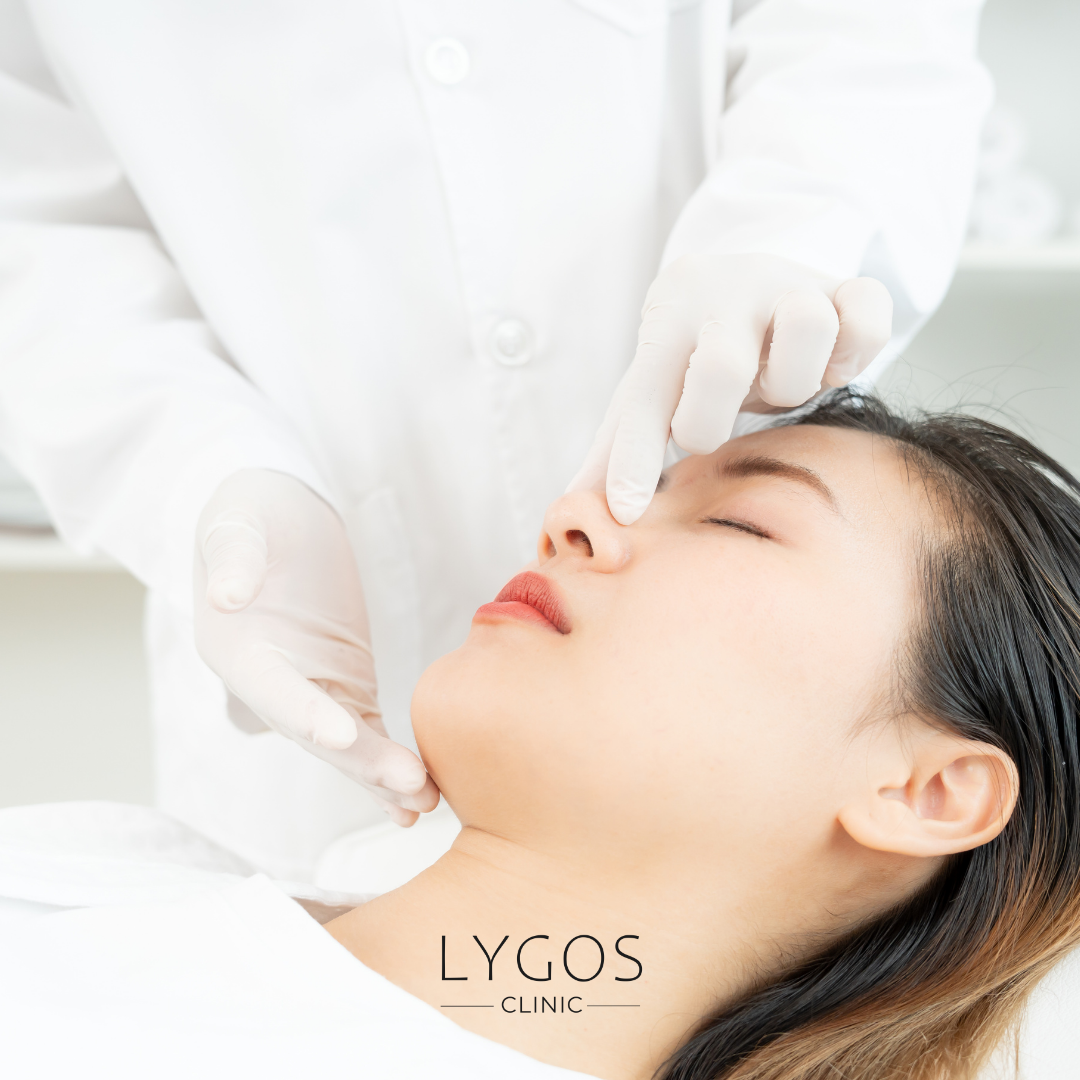
What is Non-Surgical Rhinoplasty?
Non-surgical rhinoplasty is one of the most ideal options for patients who do not have the appropriate conditions for surgery or who do not want to undergo an operation. Dermal filling comes to the fore for people who want to change their aesthetic appearance as they desire. Thanks to this filling, the patient can get rid of his problems comfortably.
A small and effective touch can be applied with non-surgical rhinoplasty to the patient who does not like the general nose appearance and experiences a psychological discomfort. In this method, where you can achieve a symmetrical nose structure, there are substances containing hyaluronic acid. The procedure performed by injection of these fillers is applied without a surgical procedure.
Non-surgical rhinoplasty, which attracts attention in terms of aesthetics, is completed in a very short time interval. This aesthetic method, which is generally preferred by people who do not want to make a radical decision, is completed between 15 and 30 minutes.
How is Non-Surgical Rhinoplasty Performed?
Non-surgical rhinoplasty is performed by injecting filling materials into the appropriate areas. This procedure, which should be applied in a meticulous and disciplined manner, takes an average of 15 to 30 minutes.
As before each method, there is a planning process between the doctor and the patient in non-surgical rhinoplasty. After the procedure is completed, the appearance of the nose is determined. The operation process is decided and suitable areas for filling points are determined.
Before starting the procedure, anaesthesia is applied so that the patient does not feel any pain or ache. Dermal filling is applied to the specified points after the area becomes numb. Since it is not a surgical procedure, no incision or stitches are required.
Non-surgical rhinoplasty can be applied to patients who do not want to undergo surgery, as well as to patients who are at the stage of deciding on surgery.
Who is Suitable for Non-Surgical Rhinoplasty?
There is no specific limitation for patients who prefer non-surgical rhinoplasty. Before deciding on the procedure, it is a critical detail to consult a specialist doctor.
Each patient's nose structure and the problem they want to solve are different from each other. As a result of this interview, you can find out whether you are suitable for this aesthetic method.
Non-surgical rhinoplasty, which is generally preferred by those who complain of low nasal tip; It is applied to those who want to lift the tip of the nose further, those who do not like the nasal profile and need intervention, and those who want to have a more remarkable nose structure in terms of symmetry.
In addition, people who want to get an idea for a permanent rhinoplasty can also try this method by choosing this method.
What are the Advantages of Non-Surgical Rhinoplasty?
There are many privileges among the advantages of non-surgical rhinoplasty. The fact that no incision or surgical procedure is performed ensures that the process proceeds with minimal risk.
Another advantage of not applying surgical intervention and incision during the procedure is that the patient completes the healing process quickly.
This method, which is very practical, makes the return of patients to their daily life faster.
Non-surgical rhinoplasty helps the face to have a more balanced and aesthetic appearance by providing symmetry in the general appearance of the nose.
It is a very critical detail to correct the nose profile with the lifting effect applied to the drooping nose tips. A person who wants to achieve the desired appearance in facial features can become more attractive thanks to this method.
Compared to rhinoplasty and traditional nose surgeries, pain and suffering levels are felt at a very low level. Patients have a comfortable experience throughout the operation process.
The nose is made proportional to the other organs in the face area. In this way, the face has a more aesthetic appearance in general.
Deformations that occur after previous nose surgeries bother patients. People who want to eliminate these problems as soon as possible can correct the problems with non-surgical rhinoplasty.

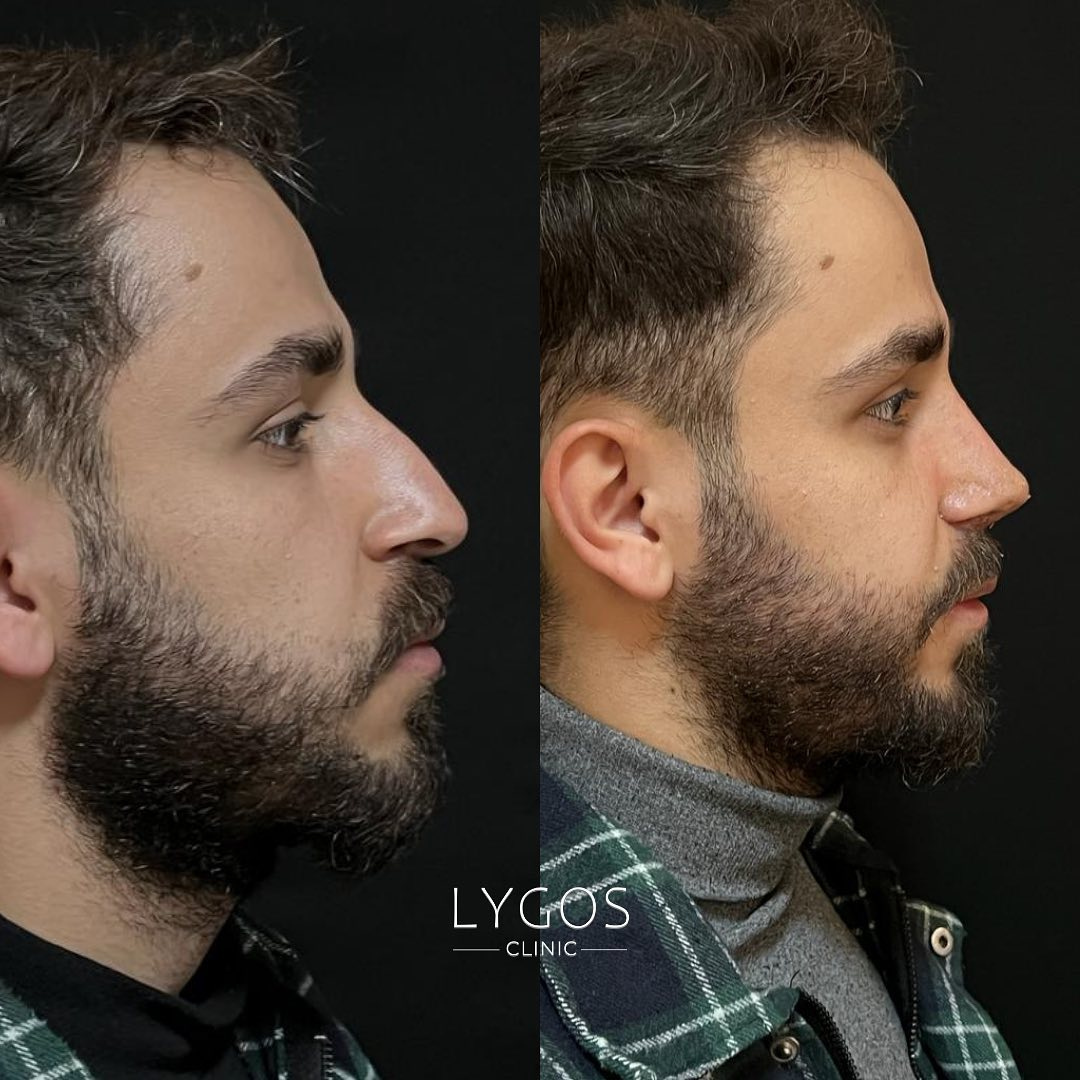
1st Month and 6th Month After Rhinoplasty
A patient who disrupts the points to be considered after rhinoplasty may not achieve the desired appearance at the end of the process. Therefore, the patient should pay attention to the recommendations given by his doctor and the medications he should use. The first month is a critical time interval for patients to have a fast and healthy recovery process.
After the operation, the patient is not recommended to sneeze, cough and blow his nose within the specified period. The nose of the patient who applies one of these may bleed. In addition, situations such as bending and heavy lifting may also damage the process. After the operation is completed, hard foods such as apples, carrots and nuts should not be chewed during the first process.
You can start consuming these foods, which can cause pressure on the nose, with the doctor's recommendation.
The patient who should pay attention to what he/she eats during the first 1 month should also pay attention to what he/she drinks. During this period, the patient should not consume caffeine, fizzy drinks and herbal teas. In addition, salt consumption should be reduced in the first 1 month, otherwise swelling may increase.
A patient who uses contact lenses can continue to wear them 2-3 days after the operation, with the recommendations of his/her doctor.
Splints and tampons worn after nose surgery should never be touched. These materials, which allow the bones shaped during the operation to heal in the correct position, should usually be removed by the doctor after a week.
The patient who successfully survives 7 days gets a new nose. Care should be taken not to wash the face while the splint and tampons are in place. Only after they are removed, the face can be washed.
A person who wants to apply make-up should wait for the bandages to come off. For the first 14 days after rhinoplasty, long and long conversations should be avoided.
Edema may be quite high in the 1st month after rhinoplasty. This situation, which is extremely normal, should not cause any concern. It is noticed that the nose, which gets better every day, reaches the expected level over time.
In the first month, you should take care to apply nasal massages and adjust your lying position so as not to damage the nose. In this way, the oedema is shaped.
The patient who overcomes all this process carefully and meticulously can do activities such as swimming 1 month after the operation is completed.
After the first 2-3 months after rhinoplasty, the patient can start doing sports and wearing glasses. The patient, who should continue to use the medications given by his/her doctor within the time limit, may undergo a revision procedure in case of a blow. Therefore, all postoperative points should be very careful.
Sixty per cent of the oedema formed in the patient's nose goes away in the 6th month. In this time interval, when the shape of the nose begins to be evident, people who have difficulty breathing feel the privilege of the surgery.
In the 6th month, when the numbness in the nose is completely over, you will see that the tip of the nose has reached the desired position. The nose, which turns into a soft structure, reaches the desired level at the end of 1 year.
Patients who experience a negative situation during the healing process after rhinoplasty should definitely consult their doctor.
What is Failed Rhinoplasty?
Unsuccessful rhinoplasty is a situation where undesirable changes occur after the previous surgery. In this case, revision rhinoplasty or revision rhinoplasty comes to the fore as a surgical procedure applied to correct functional and aesthetic problems. However, this surgery may be more complex than the first rhinoplasty surgery and should be performed by an experienced surgeon. Otherwise, the risk of a failed rhinoplasty may be encountered once again.
When Should The Second Surgery Be Performed After Failed Rhinoplasty?
It is critical to determine the right timing for revision rhinoplasty after failed rhinoplasty. Although patients usually want to act hastily, it may be necessary to wait for the full healing process. It is generally recommended to wait between 6 months and 1 year for the second rhinoplasty after failed rhinoplasty. In this process, it is expected that the oedema will completely disappear and the nose will take its final form.
Which Problems are Corrected in Failed Rhinoplasty?
More than one problem is corrected in failed rhinoplasty. Apart from the problems that the patient wants to correct with rhinoplasty surgery, new problems that arise can also be corrected in this surgical method. The problems that can be corrected after failed rhinoplasty are as follows:
- In nasal tip aesthetics, the wrong procedure applied to the patient may cause an excessively upturned nose. Also, such a problem may be present in the patient before the operation.
- Nasal curvature is among the common problems that many people want to correct. However, in patients who have had an unsuccessful rhinoplasty surgery, the curvature may not improve. People who experience this problem can seek a solution to the curvature problem with the second rhinoplasty.
- Patients with an arched nose structure may resort to this method to correct their problems.
- After rhinoplasty, rhinoplasty is applied for the second time to people who have breathing problems both for health and to correct a failed procedure.
- People with nasal tip asymmetry may have a bad aesthetic appearance. Therefore, patients may want to correct the problems they experience.
- The pointed and asymmetrical tip of the nose is also among the rhinoplasty problems.
- Patients with cartilage protrusions can apply for rhinoplasty surgery after the necessary process is completed.
- People who want to correct their arched nose before the operation may not achieve the appearance they desire. In such a case, rhinoplasty surgery is performed for the second time.
- Deformations in the saddle nose can also cause a second rhinoplasty.
- Distortions may occur in the nostrils of a patient undergoing rhinoplasty. People looking for a solution against such a risk can also correct their problems.
- Deformations in cartilage or soft tissues, called bird's beak, are among the problems corrected in rhinoplasty.
How is Revision Rhinoplasty Performed?
Revision rhinoplasty is specially planned due to the previous problems experienced by the patient. The operation, which should be carried out by an expert and experienced surgeon in the field, is shaped according to the patient's needs and nasal structure. The applied touches can range from extensive surgical interventions to minor corrections.
Revision Nose Tip Aesthetics
After unsuccessful rhinoplasty, many problems may arise. Revision nasal tip aesthetics also stands out among the frequently preferred methods. This surgery is applied to solve problems such as low nasal tip, asymmetry, width or excessive upturned nose.

What is Arched Nose Aesthetics?
Arched nose aesthetics is an aesthetic surgery procedure performed for problems occurring in the region generally called the back of the nose.
The arched nose structure, which attracts a lot of attention especially from the side, gains an even more prominent appearance with the bone and cartilage structures on the back of the nose.
In operations performed according to the general health status of the patient, the operation process of the noses with mild problems takes a shorter time. Apart from the problems that are eliminated by a simple filing method, there are also more advanced problems.
It is one of the most ideal options for solving the problem that occurs in the form of relief in the area called the back of the nose. This method, which is of great importance for those who are not satisfied with their profile photos, offers both aesthetic and psychological solutions.
How is Arched Rhinoplasty Performed?
Arched rhinoplasty is a surgical intervention that aims to correct the prominent arched appearance on the back of the nose. This aesthetic operation can be performed in two different ways, closed and open methods. In the closed method, fillers are injected into the back of the patient's nose. Thanks to these substances, the arched appearance is removed quite effectively.
Thanks to closed arched rhinoplasty, the patient can achieve the desired appearance. However, it should not be forgotten that this method is not permanent. Long-term results should not be expected from this method. Therefore, it is an option not preferred by many people. In open arched rhinoplasty, inverted V-shaped incisions are made in the patient's nose. These incisions are treated meticulously.
Excess bone and cartilage tissue is rasped and the appearance of the arched structure is corrected. If there is a collapse in the patient's nasal structure, the collapsed area is filled with cartilage tissue taken from the ear or spine. It is critical to choose a specialist doctor for the open method, which is one of the most ideal options among the arched rhinoplasty procedures.
Since tissues taken from the patient's own body are used in the operation, the patient's health status is examined. If there is no problem in the general health status of the person who is examined in detail, he/she can undergo surgery. During the arched rhinoplasty operation, it is noteworthy that additional procedures such as nose lift and nasal tip lift are also performed.
As a result, arched rhinoplasty is a surgical intervention performed with closed and open methods and is applied according to the patient's preference and needs. Those who want to have more detailed information can contact Lygos Clinic's expert team and ask what they wonder about arched rhinoplasty.

Advantages of Arched Rhinoplasty
Among the most important advantages of arched rhinoplasty is the end of both aesthetic problems and psychological problems.
It is possible to get 100 percent positive results from this method, which is generally preferred by people with oblique and splayed nose appearance. The perspective of a person who gets rid of unwanted images also changes.
A person who has difficulty breathing before the operation and who has serious discomfort from this situation disappears the problem of breathing after the operation is completed.
It is not possible for the downward slanted appearance of the nose to occur again after arched rhinoplasty.
Thanks to the appropriate tissue parts taken from the body, the problems experienced by the patient are solved and it becomes easier to achieve the desired appearance.
After the surgery, a person who follows the recommendations given by his doctor is very likely to get a positive result. By following the recommendations, you can have a more proportional nose, which is among the advantages of arched rhinoplasty.
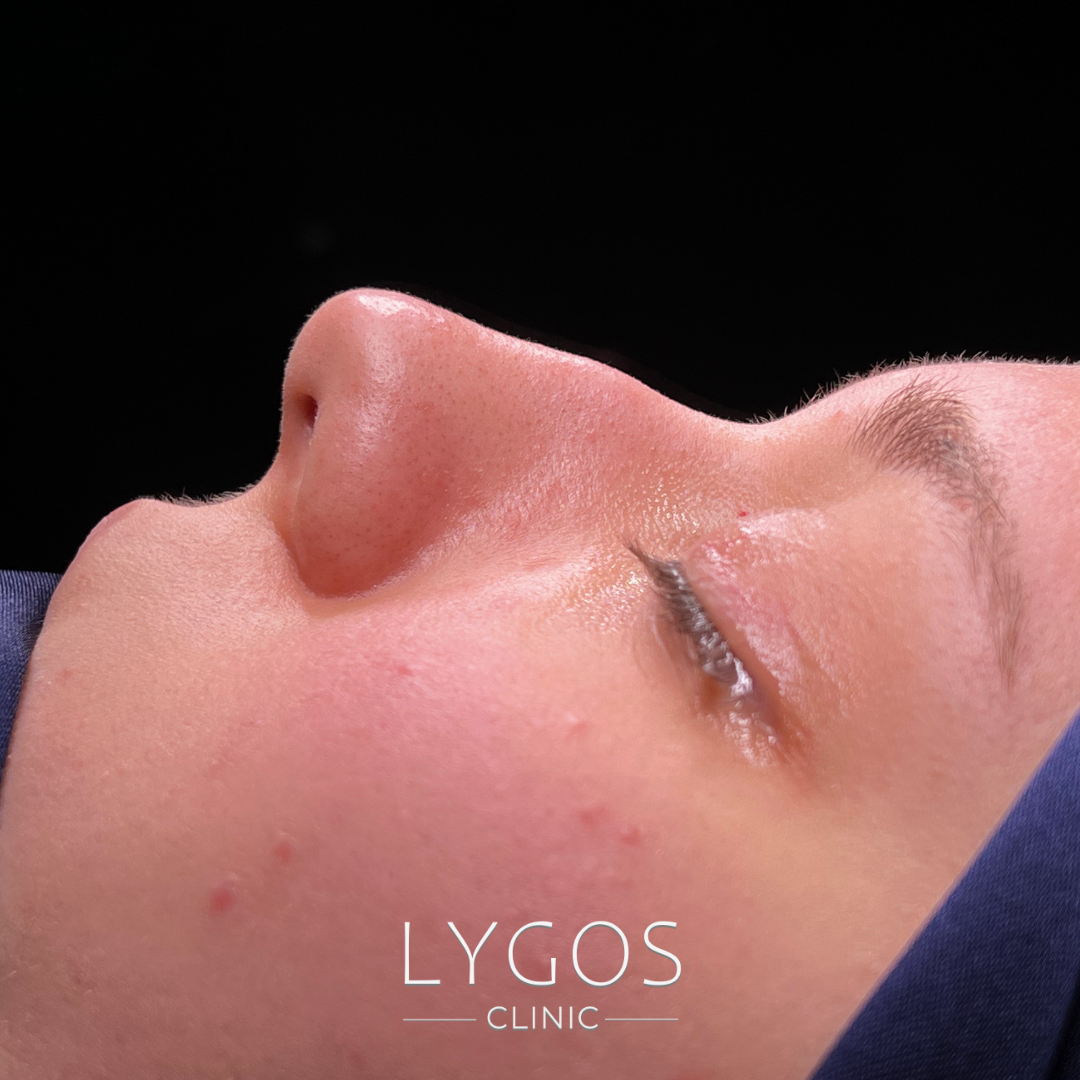
Before Arched Nose Aesthetics
Before arched rhinoplasty, the patient's nasal structure is examined by the doctor. After the physical examination, the doctor, who examines the nose and cartilage structure in detail, decides on the most appropriate surgical method after the necessary interviews with the patient.
The doctor, who acts according to the patient's demands and general health status, generally prefers the open surgery method.
Although it is a critical detail to prefer a surgeon who is an expert in the field, it is equally important to follow the rules before surgery.
There are many points to be considered before arched rhinoplasty. While the patient should stop drinking alcoholic beverages at least 1 week before the surgery, he/she should consult his/her doctor about the medications he/she uses regularly and continue to use them afterwards.
In addition, care should be taken not to consume blood-thinning foods and drinks. These details, which can cause excessive bleeding during the procedure, can make the doctor's job more difficult.
Attention should be paid to sun rays before the operation. Otherwise, there is a risk of damage to the nose. It is recommended not to wear any make-up on the day of the arched nose surgery. In the operation, general anaesthesia is applied to prevent the patient from feeling pain and suffering.
Therefore, you should not consume anything about 6 hours before the operation and take care to clean your face with an antibacterial soap.
A person who does not follow these rules or recommendations before arched rhinoplasty has a risk of having problems during and after the procedure. Therefore, the doctor's recommendations should be followed before and after the surgery. In this way, you can overcome the process in the fastest way and achieve the appearance you desire more easily.
After Arched Nose Aesthetics
There are points to be considered after arched rhinoplasty, just like before. The patient may need to stay in hospital for one day after the operation. Since general anaesthesia is applied to prevent pain and pain in the operation, it is acted according to the general health status of the patient.
If the patient does not have any problems or a condition that requires hospitalisation, he/she can be discharged after the operation. The first 6 months after arched rhinoplasty are of critical importance.
The patient should follow the rules and recommendations and should not forget the following details:
Bruising, swelling and oedema may be seen on the face and nose of a person who has successfully completed the operation. These details, which are extremely normal, disappear spontaneously within 1 week. If bruises, swelling and oedema on the face and nose of a patient continue for more than 1 week, he/she should consult his/her doctor.
You should make sure that you choose a surgeon who is an expert and experienced in the field. If the right doctor is not chosen, you can see that wrong decisions lead to big problems. You should strictly follow the recommendations given by your doctor before and after arched rhinoplasty and take care to use the medications given by the surgeon regularly.
After the operation, you should lie on your back and keep your head up to relieve the edema and swelling in the body and nose. In this way, swelling and oedema will heal faster. The waiting period after arched nose surgery is quite fast. A person who has undergone an aesthetic procedure can return to normal life approximately 1 week after the operation.
A quick return to normal life does not indicate that the operated area has fully recovered. The patient fully recovers between 6 months and 1 year on average. It is recommended that the patient does not wear glasses within 1 month after the operation. The patient, who should take meticulous care of the aesthetically treated nose, can start wearing lenses 3 days after the operation.


What are the Risks of Rhinoplasty Surgery?
Each surgical method has its own risks. Therefore, there are also risks of rhinoplasty surgery. However, this does not apply to all patients. It is determined by a professional team whether a person who undergoes a detailed examination before the operation is suitable for the operation.
In this way, possible risks are identified by the doctor and shared with the patient. You should make sure that you choose the right doctor for this detail, which is very important both in terms of health and ethics.
The nose is one of the most sensitive organs of the human body. There is always a risk of bleeding whether or not nose surgery is performed.
Therefore, the patient's nose may bleed during or after rhinoplasty surgery. Bleeding nose during or after the operation does not cause any life risk. Operasyonda veya sonrasında kanayan burun, herhangi bir hayati riske yol açmamaktadır.
A patient who has undergone an unsuccessful rhinoplasty may need a second rhinoplasty operation. The second operation, which is needed for many reasons, may be the ideal solution for the problems that arise. It is generally preferred in cases such as difficulty in breathing.
Among the risks of rhinoplasty surgery, it is also applied to people who are not in the right age range. A person who has not completed body development or a patient with health problems may have problems with rhinoplasty surgery. Therefore, body development should be completed or it should be decided to perform the operation with the approval of the doctor.
There is also the possibility that the patient's body may react negatively. Even in such a case, the closest aesthetic result can be achieved. If you cannot find an answer to your doubts before rhinoplasty surgery, you can consult the expert team of Lygos Clinic.
Thick Skin Rhinoplasty
A person with a thick-skinned nose structure has more sweat and summer glands than the skin on the back of the nose. The fact that people with a thicker nose structure have more sebaceous glands is one of the most important points affecting the surgery.
Since the distribution and frequency of these glands are different compared to other nasal structures, aesthetic intervention should be performed more carefully. Therefore, a thick-skinned rhinoplasty operation should be performed by a professional team.
Many stages should be considered from preoperative planning to informing the patient. After learning the structure of a patient's nasal skin, it would be more logical to discuss the possible effects of the surgery.


Nasal Tip Swelling and Crookedness After Rhinoplasty
The crookedness, which is one of the most common problems in the nose, causes many people to apply for aesthetic surgery. However, in some patients, due to certain reasons, nasal tip swelling may occur after rhinoplasty.
Therefore, the patient's health status should be carefully and meticulously examined before the operation. In this way, possible problems are prevented and the rhinoplasty process progresses smoothly.
Nasal tip swelling, which causes nasal deformity and breathing difficulties, may occur for more than one reason after aesthetic surgery. These problems, which usually occur due to the characteristics of cartilage and bone tissue, may differ depending on the asymmetrical proportions in the bones.
foreseen that a patient will experience nasal tip swelling after rhinoplasty, he/she is definitely informed about the issue. By consulting the expert team of Lygos Clinic, you can get the best result after rhinoplasty and feel continuous support during the process.
When Does the Nasal Tip Descend After Rhinoplasty?
The different health structure of each patient means that they have a certain healing process. Therefore, the nasal tip lift after rhinoplasty goes down faster or slower with the patient paying attention to certain points. The tampons placed in the area after the surgery cause nasal tip lift.
The tampons placed to prevent damage to the treated area are removed after a certain time. After the removal process is completed, you will notice that the nasal tip lift will go down and the nasal structure will take a normal appearance. The tampons, which are usually removed within 1 week, are determined according to the patient's full recovery.
The patient should pay attention to the treated area until this time interval. After rhinoplasty surgery, the tip of the patient's nose may be swollen. These symptoms, which are quite normal, last between 2 and 3 weeks. The patient's health condition and the difficulty level of the operation determine the time it takes for the swelling to subside. In addition, the open or closed method of rhinoplasty surgery also affects the healing process.
Nasal tip lift after rhinoplasty differs in closed and open methods. Since the healing process of a person who prefers the closed method will take a shorter time, it is expected that the nasal tip lift will also heal in a shorter time. After rhinoplasty surgery, the medications and rules given by the doctor should be strictly followed and care should be taken not to touch the nose too much.

Piezo Rhinoplasty
Rhinoplasty is generally known as a procedure performed due to deformity. Apart from this problem, piezo rhinoplasty is one of the most ideal options in cases such as shortness of breath, curvature of the nasal bone, trauma. Apart from traditional methods, piezo rhinoplasty surgeries are becoming increasingly popular. This technique is frequently preferred especially in Turkey and European countries. As an extremely modern method, it uses ultrasonic sound waves to shape the nasal bone. Thus, other tissues are not damaged and complaints such as pain and swelling are minimised.
What is Piezo Nose Aesthetics?
Piezo rhinoplasty takes its name from the device used. Instead of the cutting and breaking techniques preferred in traditional rhinoplasty methods, ultrasonic waves are used. This method, also known as ultrasonic rhinoplasty, was first applied by Massimo Robiony in 2004.
The piezo method works safely without damaging other tissues by focusing ultrasonic waves only on the nasal bones. The millimetric calculations made with the help of technology ensure the precise formation of the desired shape in rhinoplasty surgery.
In this way, soft tissues, vessels and nerves are not damaged. Piezo rhinoplasty, which is very popular among other rhinoplasties, is preferred as a reliable method. This method, which takes an important step in the field of aesthetic surgery, offers patients a safer, less painful and faster recovery process.
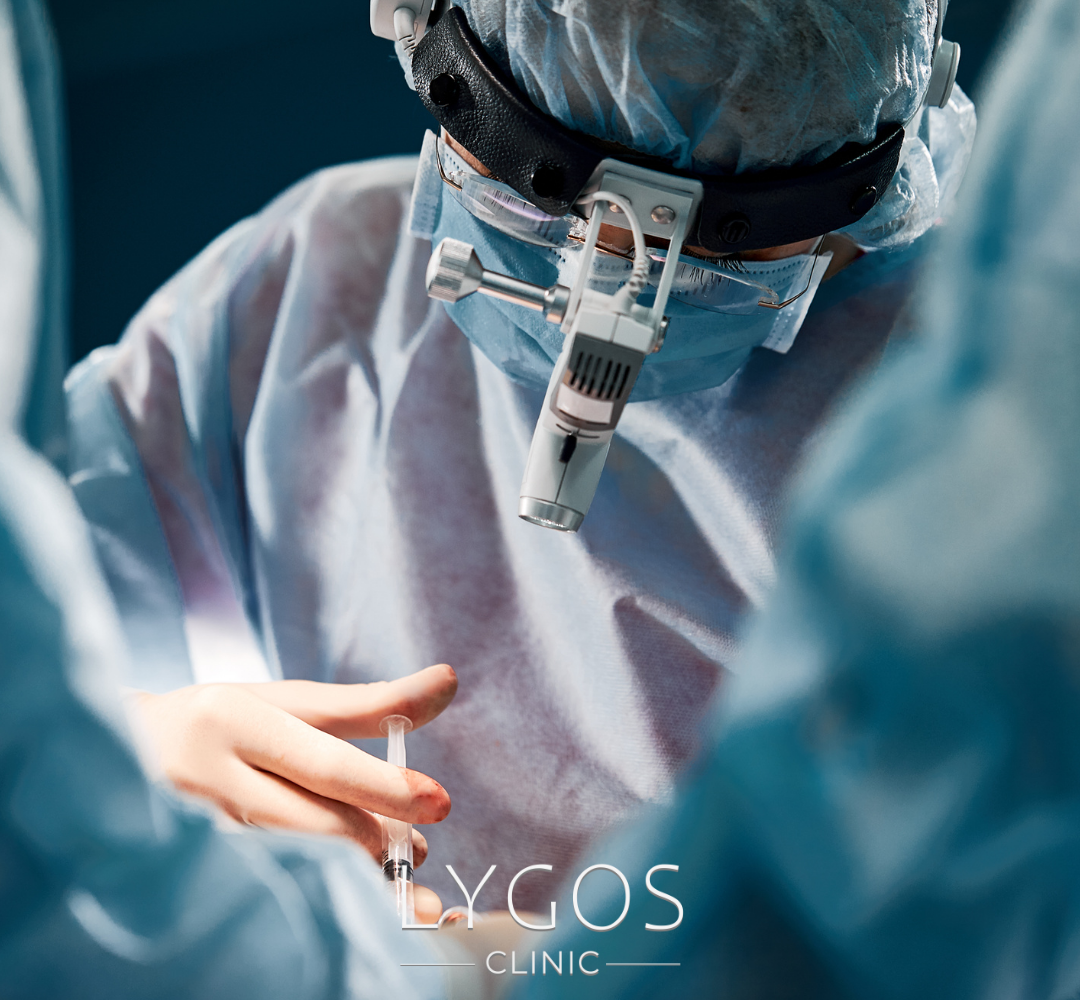
Advantages of Piezo Rhinoplasty
Piezo rhinoplasty has made rhinoplasty operations safer, less painful and more precise by utilising the advantages offered by technology. This innovative method is groundbreaking for patients in terms of achieving a fast recovery process and desired aesthetic results. So, what are the advantages of piezo rhinoplasty? Here is the answer...
Protection of Tissues
Since rhinoplasty is in the facial area, it is necessary to be more careful in such operations. Thanks to the piezo method, only the nasal bone can be shaped without damaging the cartilage, bone and soft tissues.
Precise Results
In the piezo method applied by making millimetric calculations, more precise results are obtained compared to traditional methods. Patients can achieve their desired appearance more easily with this method.
Confidence and Less Pain
Since the cuts made by ultrasonic sound frequency are smoother and more regular, post-operative pain is usually almost non-existent.
Less Bleeding and Bruising
Since there is no need for bone fracture in rhinoplasty performed with piezo method, bleeding during the operation is less. In addition, swelling or bruising on the face is less common.
Is There Any Disadvantage of Piezo Rhinoplasty?
Performing the operation with the current and modern technique shows that piezo rhinoplasty is not a disadvantageous option. However, as with every method, some symptoms may be encountered in this technique. In the piezo method, the fact that the tissues are not damaged and there are no uncontrolled fractures in the bones minimises the effects that occur after the aesthetic operation. Therefore, the possibility of swelling and bruising after surgery is very low compared to other methods.
Suitable Candidates for Piezo Rhinoplasty
In piezo rhinoplasty, which can be applied in more than one problem, suitable candidates are determined by the doctor. The patient, who should choose a specialist and experienced doctor in his field, learns whether he is suitable for this method as a result of the examination. Piezo rhinoplasty method, which is one of the most ideal options for many patients, is generally preferred in these cases:
If a person has a problem with the shape of the nose and this makes it difficult to breathe, it is among the suitable candidates for piezo rhinoplasty. People with a crooked nose to the right or left and individuals with a wide or narrow nose may also prefer this method.
The nose shape of some patients may be congenitally malformed. The nasal structure of some people may lose its shape due to an accident or trauma. Patients with such problems can achieve the desired appearance with the piezo rhinoplasty method.
Patients who want to undergo an operation for the desired shape with a deformed nasal structure despite previous surgery can also apply for piezo rhinoplasty surgery. Apart from all these candidates, people who do not want their bones to be broken and their tissues to be damaged during the aesthetic operation can also apply piezo rhinoplasty.

Best Rhinoplasty Doctor
A person who decides to have rhinoplasty should pay attention to many points. Rhinoplasty surgery needs to be performed very meticulously and carefully. For this, choosing the right nose surgeon is a very critical detail. A specialist doctor is one of the main reasons for a good nose surgery and a successful result. So, how to choose the best rhinoplasty doctor?
Rhinoplasty is usually performed by ear, nose and throat surgeons and plastic surgeons. It is important to choose a specialist in rhinoplasty and function among these doctors who undergo all kinds of aesthetic operations. This decision for the best result should be made after a detailed research. The best rhinoplasty doctor can be determined by the number of surgeries performed in a year.
A surgeon who preferably performs more than 100 rhinoplasty operations in a year can be considered successful. In addition, a doctor with 5 to 15 years of rhinoplasty experience is one of the most ideal options for this method.
The right surgeon analyzes the patient's photographs before the surgery. The doctor, who shows the patient the result that will occur after the rhinoplasty, analyzes the process. The plastic surgeon who plans the aesthetic operation for you also explains the process to you.
The best rhinoplasty doctor determines the surgery prices accordingly. Therefore, giving a clear answer for rhinoplasty and other plastic surgery prices may mislead patients. Depending on the experience and success rate of the doctors performing the surgeries and the equipment of the hospitals, the average prices may be higher or lower.
Nose Tip Aesthetics
Nasal tip aesthetics is a type of rhinoplasty performed without touching the nasal bones. This method, which stands out with this detail, is one of the most ideal options for patients who want to have an aesthetic and functional nose structure today. This highly successful surgery aims to regulate the size, shape and proportions of the tip of the nose down to the finest details. Thus, patients can achieve the nose appearance they want.
What is Tip of the Nose Aesthetics?
Tip rhinoplasty is a type of surgery also known as tip rhinoplasty or tipplasty. This procedure, which is performed by leaving the nasal bones untouched, regulates the tip of the nose in ideal dimensions. The tip of the nose has different characteristics in each person.
The tip of the nose, which varies according to age, race, health status and genetic reasons, is one of the most striking points in the face area.
Therefore, nasal tip aesthetics aims to improve both aesthetically and psychologically by regulating the aesthetic appearance, shape and proportions of the patient. You can reshape your nose tip with tip rhinoplasty surgery, which should be performed by a technically experienced doctor.
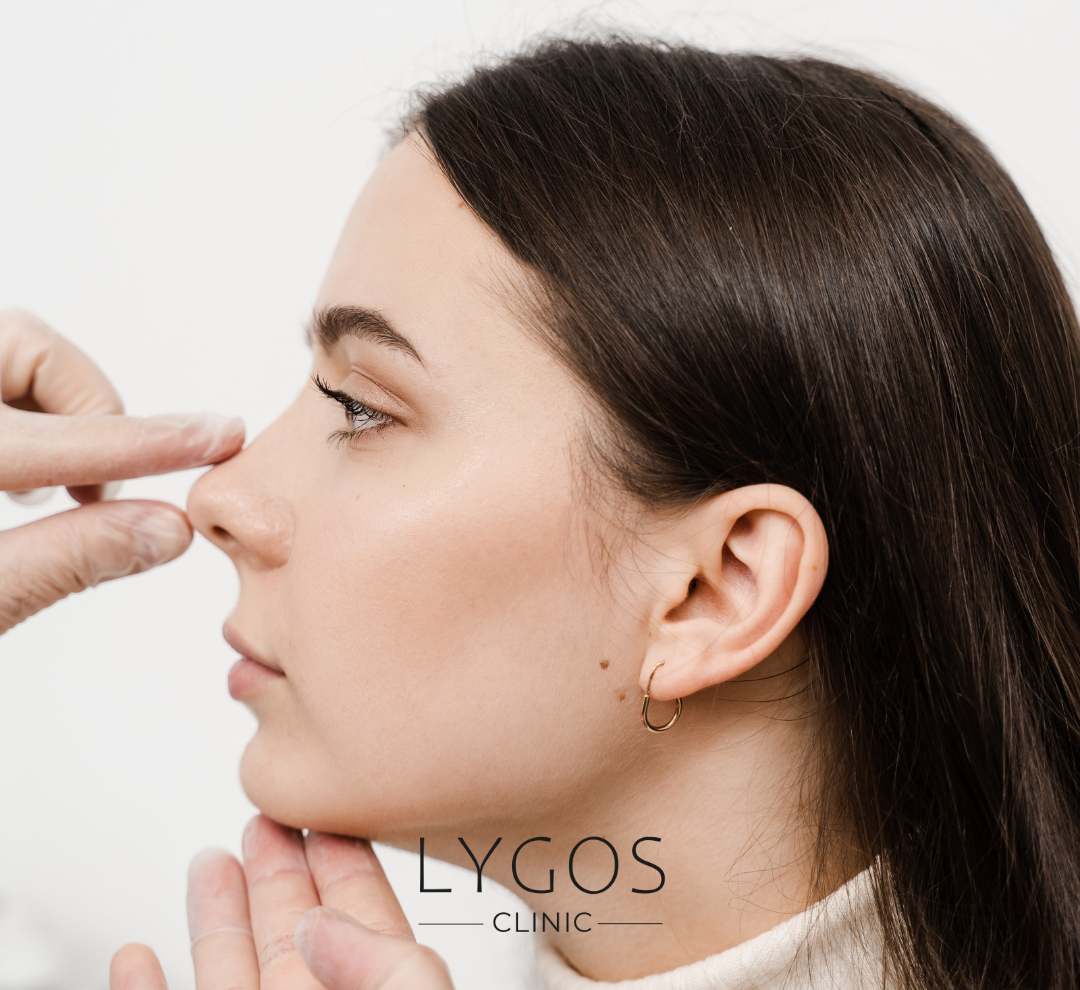
Causes of Nose Tip Aesthetics
Nose-Lip Angle
The operation, which aims to improve the proportions of the face by regulating the nose-lip angle, eliminates the patient's troubles in front of the mirror.
Nasal Tip Height & Width
Nasal tip aesthetics involves adjusting the height and width of the nasal tip in line with the patient's expectations.
Nasal Tip Cartilages
Nasal tip cartilages play an important role in nasal tip aesthetics by bringing them to the desired size and shape with surgery.
Nasal Wings and Holes
Nasal wings and holes are the elements that should be taken into consideration in rhinoplasty and their shapes can be regulated surgically.
Among the reasons for nasal tip aesthetics, there may be many reasons other than such situations. A patient who wants to apply this method can make a healthier decision about the process by consulting his/her doctor.
As a result, nasal tip aesthetics, when performed with detailed planning and in the hands of a specialized surgeon, can give the patient a natural and face-compatible appearance. This surgery allows the nose to gain a different dimension not only aesthetically but also functionally.
Suitable Candidates for Nose Tip Surgery
Candidates suitable for nasal tip surgery should first know that the bones in the nose are not intervened. If a patient's bones need to be treated, the doctor decides whether they are suitable for this surgical method. A person who has at least one of the following conditions may be a suitable candidate for nasal tip surgery (tipplasty).
- If the tip of a patient's nose is wide, it may be suitable for tip surgery.
- The wings of the nose in every healthy individual may be narrower or wider than normal in some people. The procedure can also be applied to people with this condition.
- Apart from narrow or wide nasal wings, the same situation is also seen in the nostrils. If a patient complains of such problems, he/she may prefer the type rhinoplasty method.
- Patients with troubled nasal tip size are also suitable for this aesthetic method. This situation, which is seen in people whose nose extends towards the mouth, is usually experienced in people whose upper lip-nose angle is less than 90 degrees.
- The nose may be forward, out of proportion and longer than normal. Apart from this, it is also possible to have an excessively flattened or short nose structure. All these nasal structures are among the suitable options for type rhinoplasty surgery.
When are the Stitches Removed After Rhinoplasty?
The plaster, stitches, and tapes used to protect the nose after rhinoplasty can be elements many patients don't particularly like. Even though patients who desire their new noses recognize the importance of these supports and the substantial protection they offer, they wish to get rid of them as soon as possible. The duration of stitches and tapes remaining on the nose is not quite long; however, removing them prematurely can lead to unwanted results.
Right after the operation, the plaster and tapes applied to the nose help stabilize the nose, maintain its shape, and minimize swelling. The plaster placed on the nose is typically made of plastic or metal and is custom-designed for the individual. These types of plaster are removed approximately one week after the surgery.
If a procedure has also been performed on the septum, silicone may need to be placed inside the nose. The silicone supporting the inner structure of the nose may need to remain there for approximately 3 to 7 days. Subsequently, it should be removed by your doctor. If the plaster falls off or loosens before it is time to remove it, you should consult your doctor.
Nasal tampons can be used to prevent potential bleeding after the operation. This practice can be uncomfortable and make breathing difficult, so it is generally not preferred in nose job operations. However, your doctor may decide to apply tampons if there is excessive discharge. Nasal tampons are typically removed 1-2 days after the operation. If there is a bleeding issue, it can be prevented by self-absorbing stitches.
When Do Stitches Fall After Rhinoplasty?
There are two types of stitches used in rhinoplasty surgeries: absorbable and non-absorbable. If a portion of a stitch sags when the nose is blown forcefully or when sneezing, there is no need to worry. Regardless of the situation, it is crucial not to interfere with the stitches and pull them. Absorbable stitches are usually removed by the doctor 5-6 days after the surgery.
When the absorbable stitches will completely disappear depends on the type of stitch used (thickness, material). Some can fall out in 3 months, while others can dissolve in 2 weeks. Depending on the type of stitch used, your doctor will provide you with an estimated timeframe and an appointment for stitch removal. Moistening the area with emollients can help accelerate the stitch dissolving process.
Leaving the stitches in place longer than necessary can lead to permanent stitch marks. Therefore, it is essential for the stitches to be removed not too early or too late but at the right time.
How is the Recovery Process After Rhinoplasty?
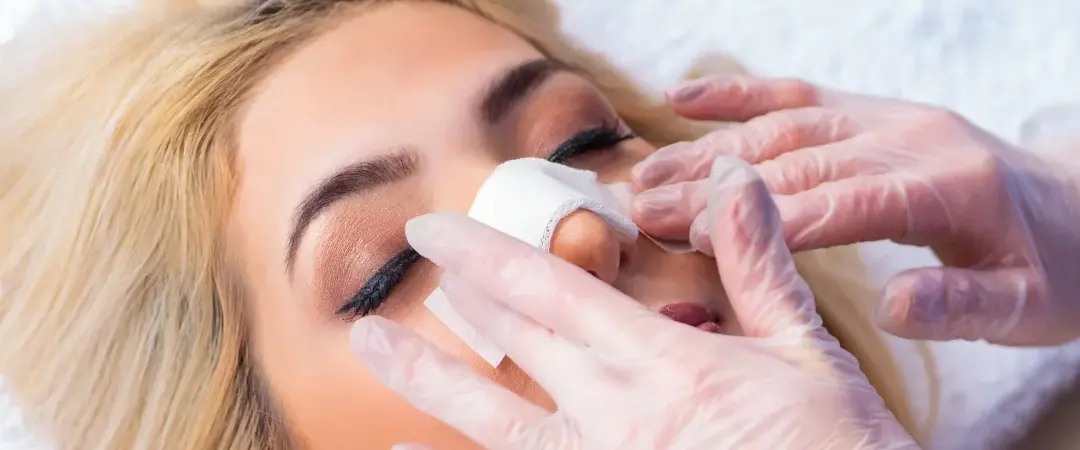
The recovery process after rhinoplasty cannot be expedited through external interventions or medications. The healing period for aesthetic nose surgery is a lengthy process that requires patience and time. This recovery period can range from 6 months to 2 years. While you may experience pre-surgery excitement, the post-operative period is generally comfortable. To achieve the best results for your nose, please be patient and give yourself time.
After the surgery, you may be discharged from the hospital the following day depending on the situation. Staying overnight in the hospital is rare. You might need to refrain from eating or drinking for the first 4-6 hours after the surgery. To prevent dryness in your mouth, you can moisturize your lips. Starting your diet with light, watery foods is recommended.
Typically, there is not much pain following rhinoplasty surgery. However, if you experience mild discomfort, nausea, or vomiting, you can manage these with medication. Keeping your head elevated while resting can reduce discomfort. During the first two days after surgery, there may be slight bloody discharges from the nose. It's crucial to rest during these initial two days.
By the third day, you can return to low-stress daily activities. To protect your nose from injuries, it is essential to be cautious and avoid harsh traumas to the nose for the first two months. In cases of spontaneous and uncontrollable sneezing, keep your mouth open. Gently blowing your nose and nasal care with saline solution are also possible.
When Do Swellings Go Away After Nose Surgery?
After aesthetic surgeries, varying degrees of swelling can occur in and around the nose and eye areas. After rhinoplasty, applying cold packs for 10 to 15 minutes every hour for the first three days can help reduce swelling. Swellings around the nose typically reach their peak within the first three days and begin to subside from the third day onwards. Generally, after 5 to 7 days following surgery, noticeable edema will be gone, and most of the swellings will have diminished.
The complete resolution of swelling in the nose and the nose achieving its final shape may take 6 months to 1 year in individuals with thin skin. For individuals with thick nose skin, this period can be longer. The complete disappearance of edema for individuals with thick nose skin can take an average of 1 to 2 years. In terms of this healing process, initially, the areas around the eyes improve rapidly. Then, the swellings in the middle of the nasal dorsum decrease, followed by the swellings near the brow of the nose. Lastly, the nasal tip edema subsides.
The recovery process after nose surgery is time-consuming and cannot be expedited. Therefore, please give yourself time to adjust to your new appearance. Every person's body reacts differently to injuries and healing. Each body forms a unique and distinct response, making it special and unique. While human faces are structured similarly, they exhibit unique diversity, as every face and nose is distinct. As a result, the outcomes will also be different.

What Should Be Known Before Rhinoplasty?
Before Nose Job, medications such as painkillers, blood thinners, anti-inflammatories, and vitamin pills that will trigger bleeding during the operation should be stopped 10 days before the operation and should be started under the follow-up of the doctor after Rhinoplasty surgery.
Before Nose Job; If the person has a chronic disease or medication use, the doctor, anesthesiologist, and nurse should be informed, and the background anamnesis should be given in detail.
Before Nose Job, eating and drinking should be stopped 12 hours before the operation to avoid complications in general anesthesia.
Before Nose Job; female patients should inform the doctor about their menstrual period.
Since the rate of contraction in the capillaries in the nose is at a minimum level during these periods, the date of operation should not be preferred in order to prevent bleeding, edema, and bruising.
Comfortable clothes should be preferred after Rhinoplasty surgery, the jewelry should not be worn, and makeup and nail polish should be avoided in terms of sterility while coming to Rhinoplasty operation.
Before Nose Esthetics; factors such as smoking, hookah, and alcohol slow down and negatively affect wound healing. Consumption should be stopped 1 week before the Rhinoplasty operation and should be started with the approval of the doctor after the operation.
What kind of doctor should be chosen for rhinoplasty?
Each individual's nose has its own special personal characteristics. The main goal of rhinoplasty surgery is to create a personalized and natural nose. Certain rules are important for people considering rhinoplasty.
The answer to how to choose a doctor for rhinoplasty lies within these rules. Preoperative communication between the surgeon and the patient plays a critical role in the success of rhinoplasty surgery.
Good communication enables the doctor to fully understand the patient's thoughts and expectations, as well as to realistically evaluate the patient's postoperative expectations.
The doctor should inform the patient about how long the recovery period after surgery will be. Time is needed for facial swelling and skin healing. Therefore, the actual result of the operation and the final shape of the nose are not fully understood at the beginning.
The result of the rhinoplasty operation becomes apparent after a few months when the swelling has completely disappeared. It is important for the patient to be patient during this time and not to expect immediate results after surgery.
They should have realistic expectations and understand the healing process. If the patient wants a nose that does not fit the general appearance of the face, the surgeon must have the equipment and courage to reject this request.
These elements are the key to a successful and healthy patient-doctor relationship. A person who wants to get the best possible result from rhinoplasty, what kind of doctor should be chosen for rhinoplasty? He/she should take care to make the right decision.
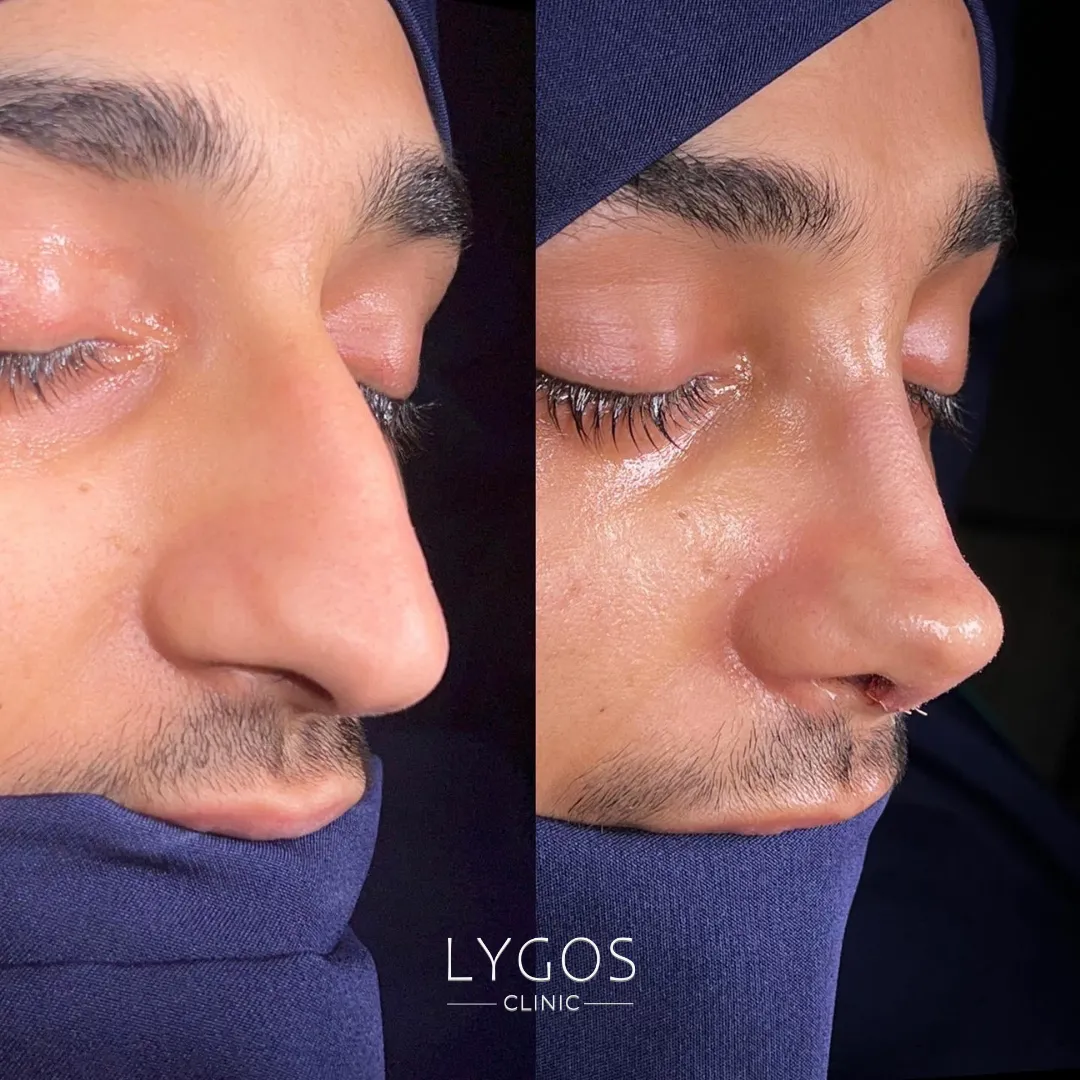
Nose Surgery for Men
In recent years, men have started to care about their appearance at least as much as women and to demand some operations for this with the change in the perspective of popular culture and the importance of aesthetic appearance. One of these operations is nose surgery.
Men’s expectations from nose surgery may vary from person to person. While some men do not want the masculine expression on their face to disappear; According to recent researches, some men prefer a small and pointed nose structure.
For this reason, men who decide to have a nose surgery should definitely have a preliminary interview with the surgeon who will perform the operation and meet on a common ground.
However, the nasal skin of men has a thicker structure compared to women.
For this reason, the rate of oedema and swelling during the healing process may be higher than in women, while the result of the intervention applied to bone and cartilage does not show itself at the same rate. It takes a longer time for the nose to settle in its final form.
Why Turkey is Popular for Rhinoplasty Surgery?
Due to the exchange rate difference, Rhinoplasty (Nose job) surgery prices in Turkey are more affordable than in Europe and America. There are counselors in their own language for patients coming from abroad. Thus, patients can express themselves more easily and can easily achieve the image of their dreams.
Since there is a lot of competition in the field of plastic surgery in Turkey, clinics are improving themselves every day. For those who want to have Rhinoplasty surgery in Turkey, clinics often provide accommodation and transport services. Turkey is one of the most developed countries in health tourism.
Health tourism in Turkey provides state support and the number of doctors specializing in plastic surgery in Turkey is very high.
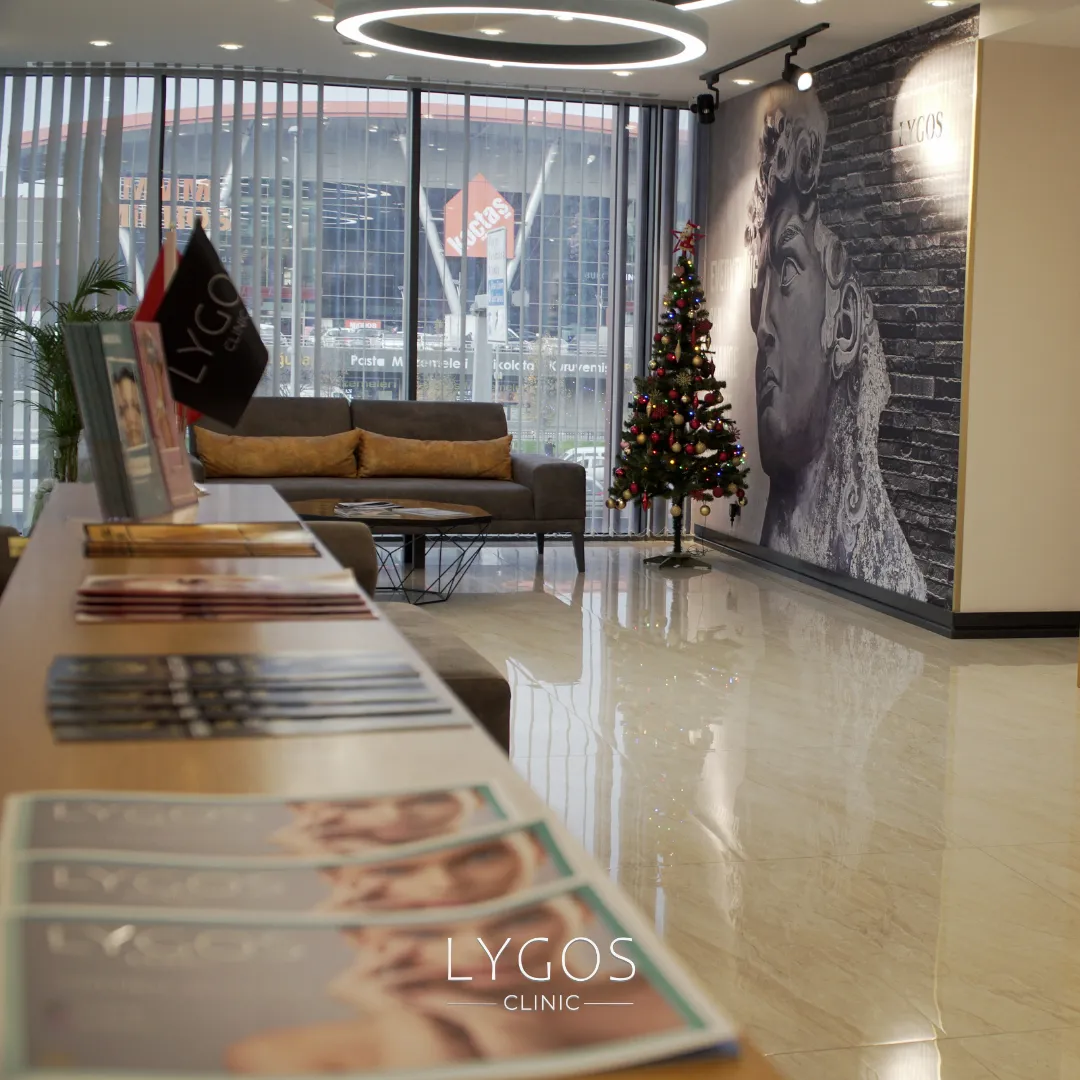
Rhinoplasty Costs in Turkey?
Rhinoplasty Costs in Turkey operation varies according to the method and technique to be applied. After the necessary medical and physical examination, the appropriate method should be planned as a result of the approval of your doctor and it should be determined which techniques the person needs both respiratory and aesthetics in this process.
After the analysis during the Rhinoplasty preparation phase, pricing should not be your only criterion in the doctor research you will do in the field of Rhinoplasty in your nose profile that you want to achieve satisfaction and success.
You should feel the trust given to you by the doctor you decide to have Rhinoplasty, and you should decide on a competent specialist who will closely follow your financial – spiritual, and physical concerns. Pricing in Rhinoplasty operations varies between $2,500 and $6,000 in Turkey, while in national such as the European Union and United States, it is between $3,000 and $8,000.
|
Rhinoplasty Type |
Turkey |
U.K. |
USA |
|---|---|---|---|
|
Closed Rhinoplasty |
$2,500 – $6,000 |
£3,000 – £7,000 |
$3,000 – $8,000 |
|
Open Rhinoplasty |
$3,500 – $8,500 |
£3,000 – £7,000 |
$3,000 – $8,000 |
|
Tip Rhinoplasty |
$2,500 – $6,000 |
£3,000 – £7,000 |
$3,000 – $7,000 |
|
Ethnic Rhinoplasty |
$3,000 – $7,000 |
£4,000 – £9,000 |
$4,000 – $10,000 |
|
Revision Rhinoplasty |
$4,000 – $9,000 |
£5,000 – £12,000 |
$6,000 – $15,000 |
|
Septoplasty |
$2,500 – $6,000 |
£3,000 – £7,000 |
$3,000 – $8,000 |
Get in Touch
Get professional treatments in Turkey at Lygos Clinic, offering effective, affordable treatments for a healthier and more aesthetically pleasing life.
You can contact us via WhatsApp and Instagram for a quick response.
Rhinoplasty F.A.Q.
Rhinoplasty, commonly known as a nose job, is a surgical procedure to reshape the nose for aesthetic or functional purposes. It involves modifying bone, cartilage, or tissue to achieve the desired appearance or improve breathing.
An ideal candidate for rhinoplasty is someone in good health, with realistic expectations, and seeking to improve the shape or function of their nose. Candidates should wait until nasal growth is complete, typically by age 16 for girls and 18 for boys.
Initial recovery from rhinoplasty typically takes 7 to 10 days, during which swelling and bruising are most noticeable. Complete healing and final results can take up to a year as swelling gradually subsides.
Like any surgery, rhinoplasty carries risks such as infection, bleeding, scarring, and dissatisfaction with results. Choosing a qualified and experienced surgeon reduces these risks significantly.
Yes, rhinoplasty can address functional problems such as a deviated septum or nasal obstructions, improving airflow and breathing. This type of procedure is often called functional rhinoplasty or septorhinoplasty.
The cost of rhinoplasty varies depending on the complexity of the procedure, the surgeon’s experience, and the location. In the United States, prices typically range from $5,000 to $15,000.
During a consultation, the surgeon will evaluate your nose, discuss your goals, and create a customized plan. They may use digital imaging to show potential results and address any questions you may have.
BLOG
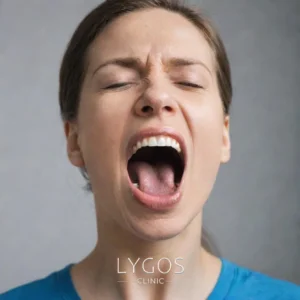
Is Breathing Through the Mouth Harmful?
Chose Your Topic Is Breathing Through the Mouth Harmful? Breathing is one of the most fundamental needs of life. However,
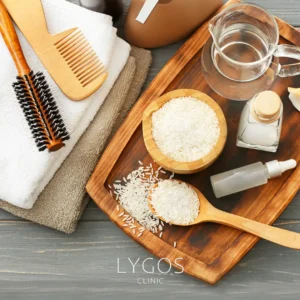
Does Rice Water Make Hair Grow? | Benefits of Rice Water
Chose Your Topic Does Rice Water Make Hair Grow? Natural methods in hair care have become quite popular in recent

Breast Lump | Types: Benign, Malign and Causes | LYGOS 2025
Breast Lump While cancer stands out as one of the most common health problems today, early diagnosis rates are also


